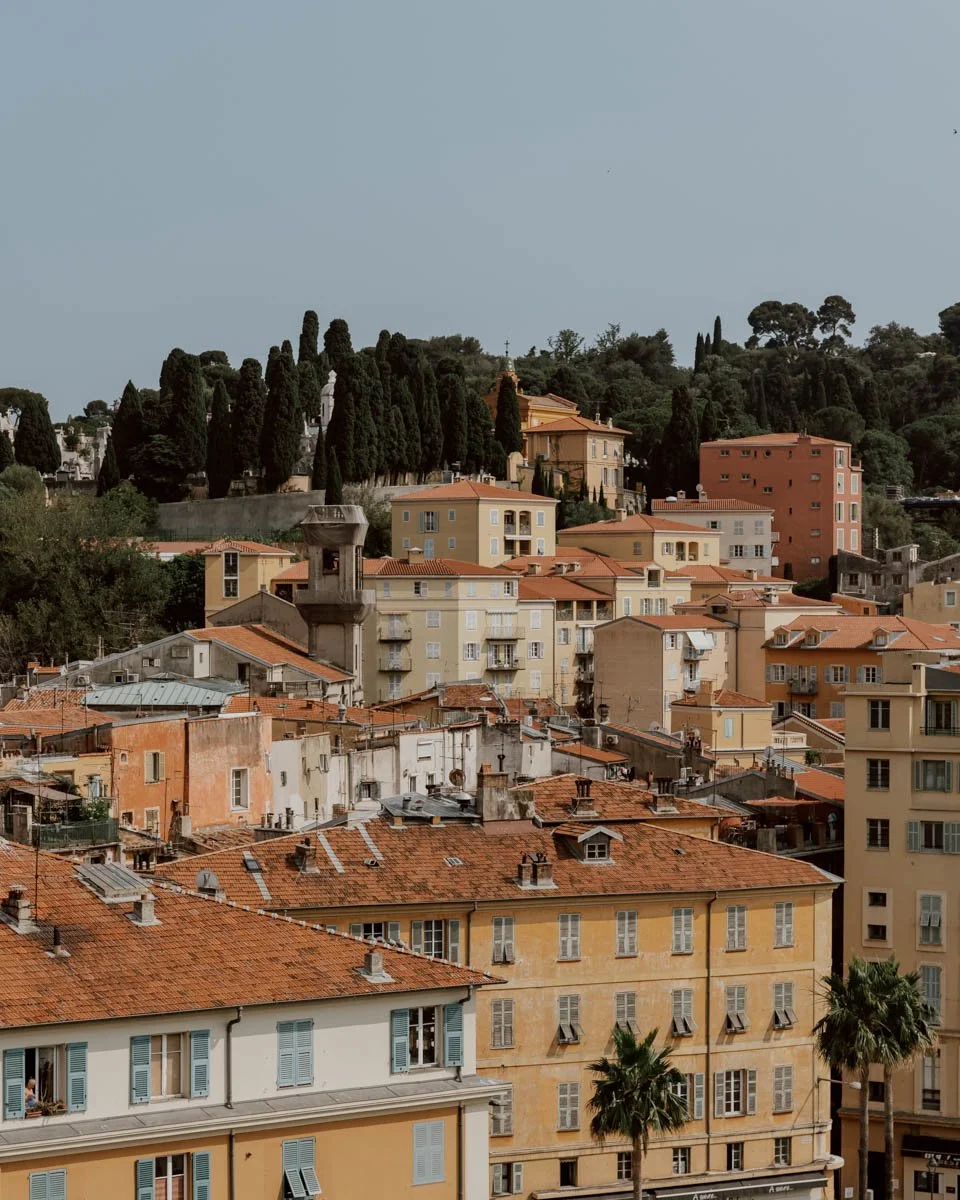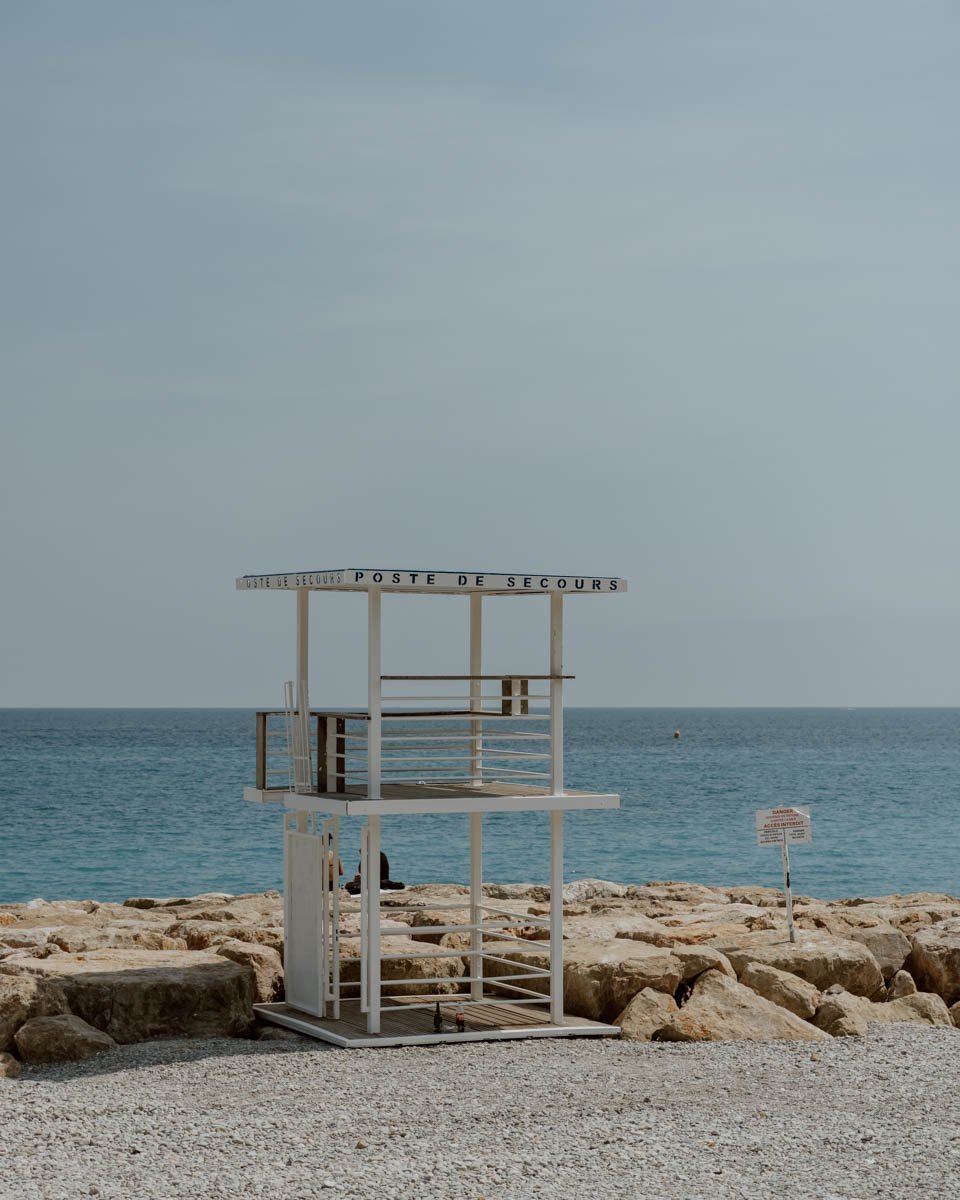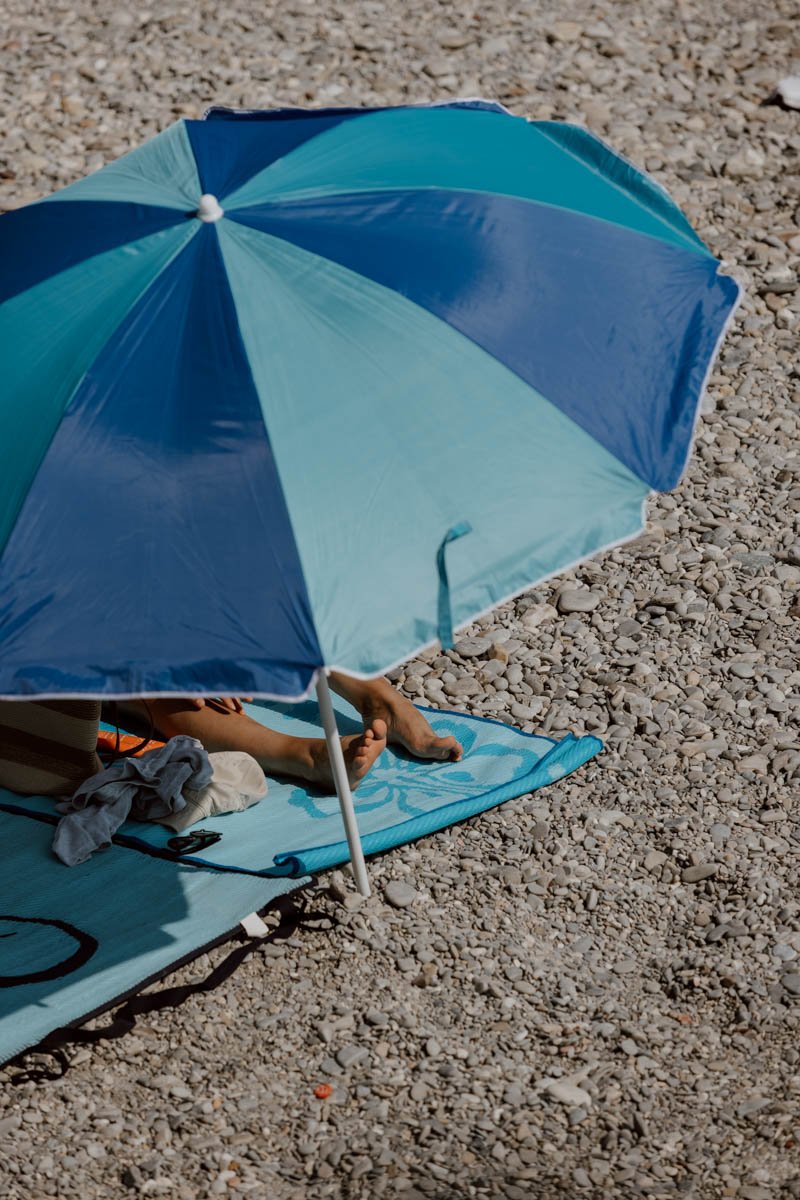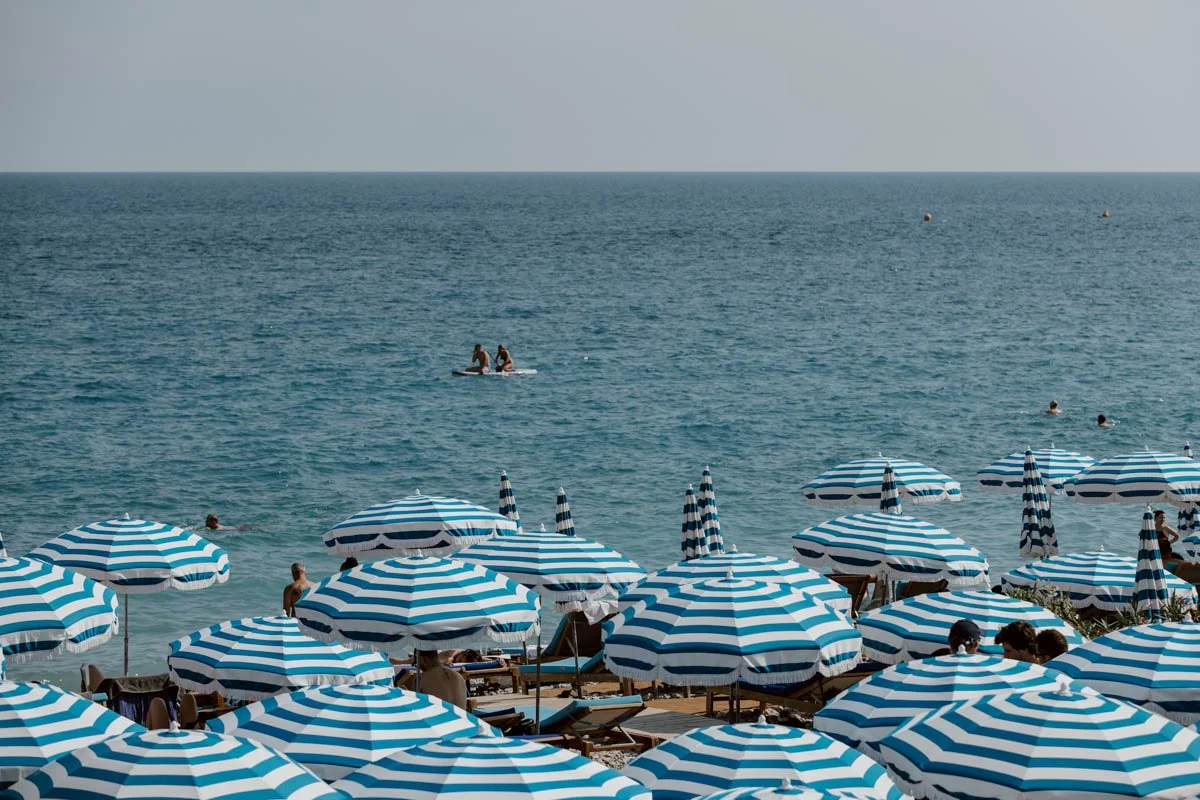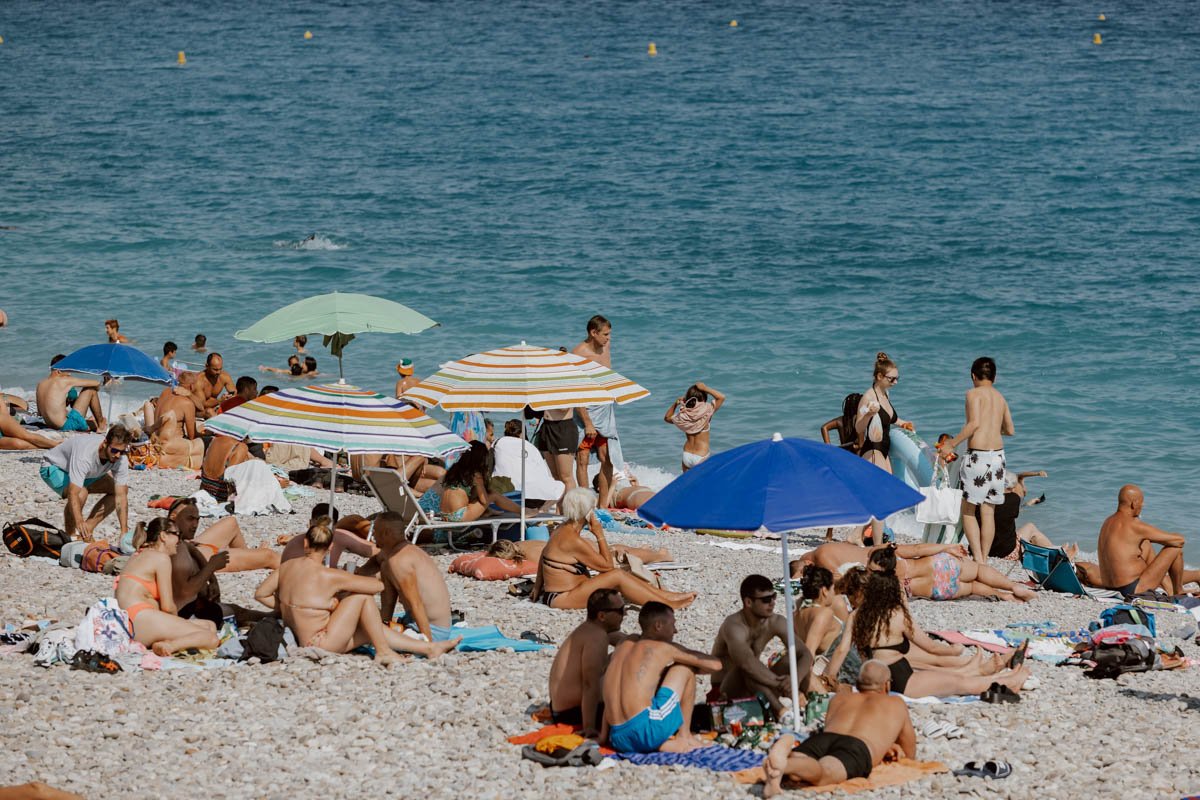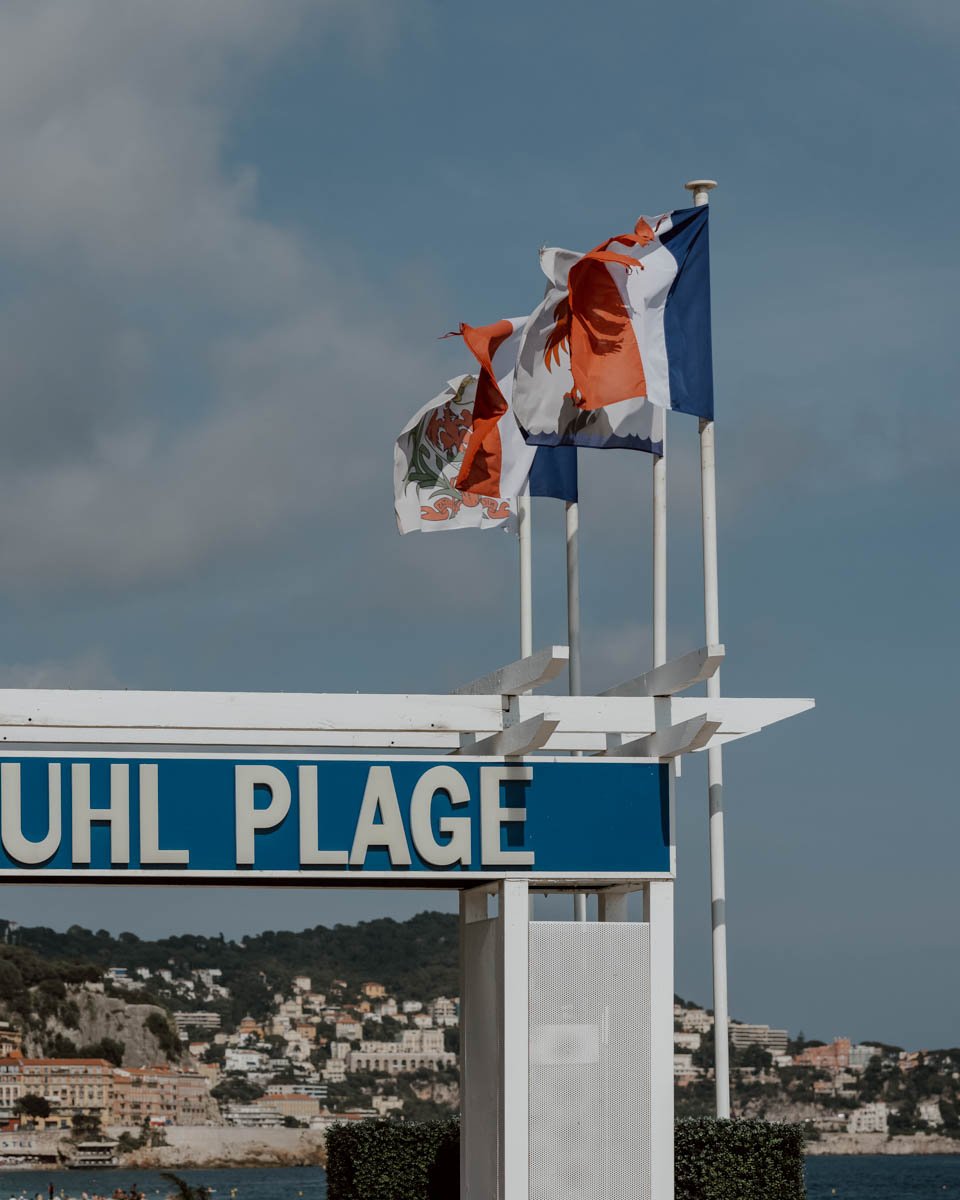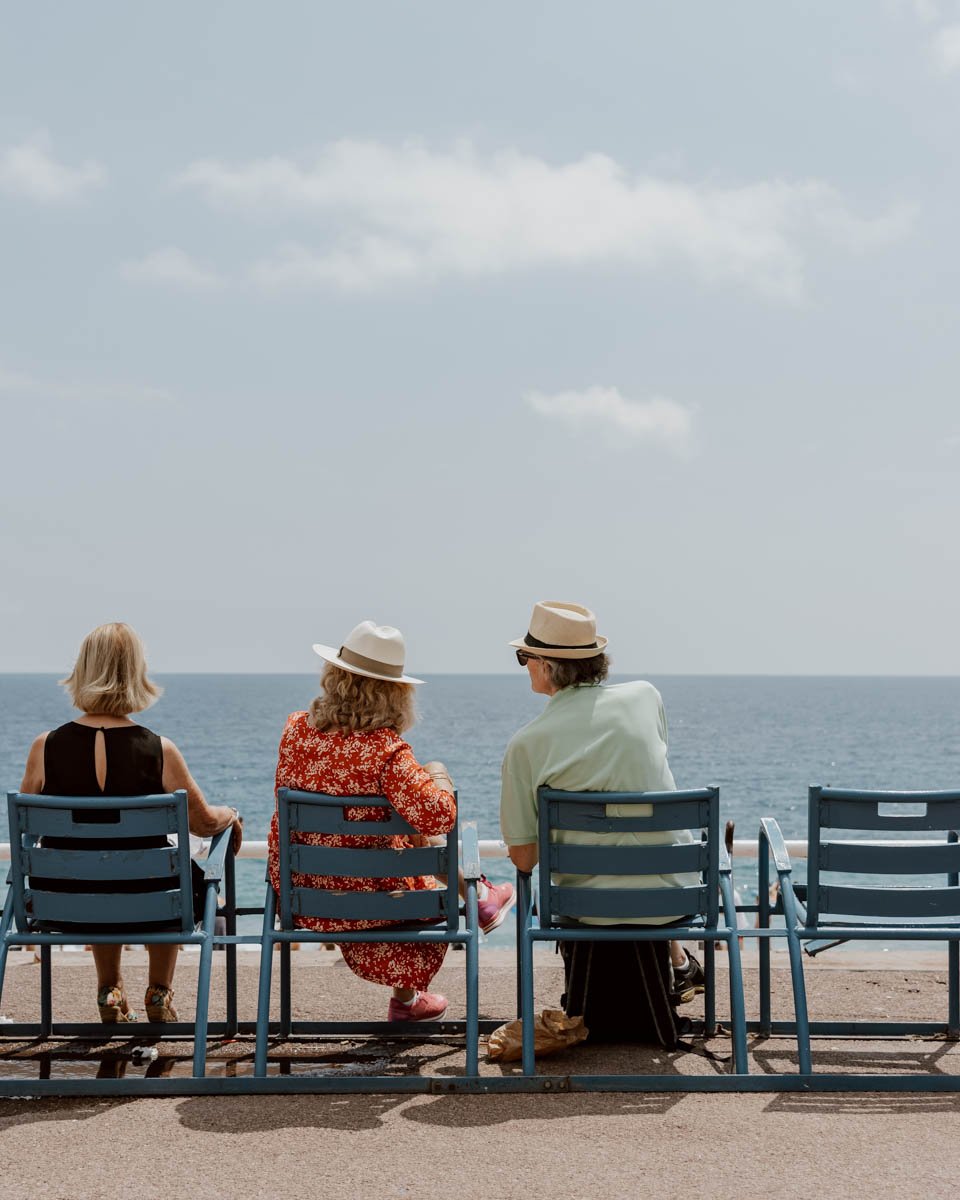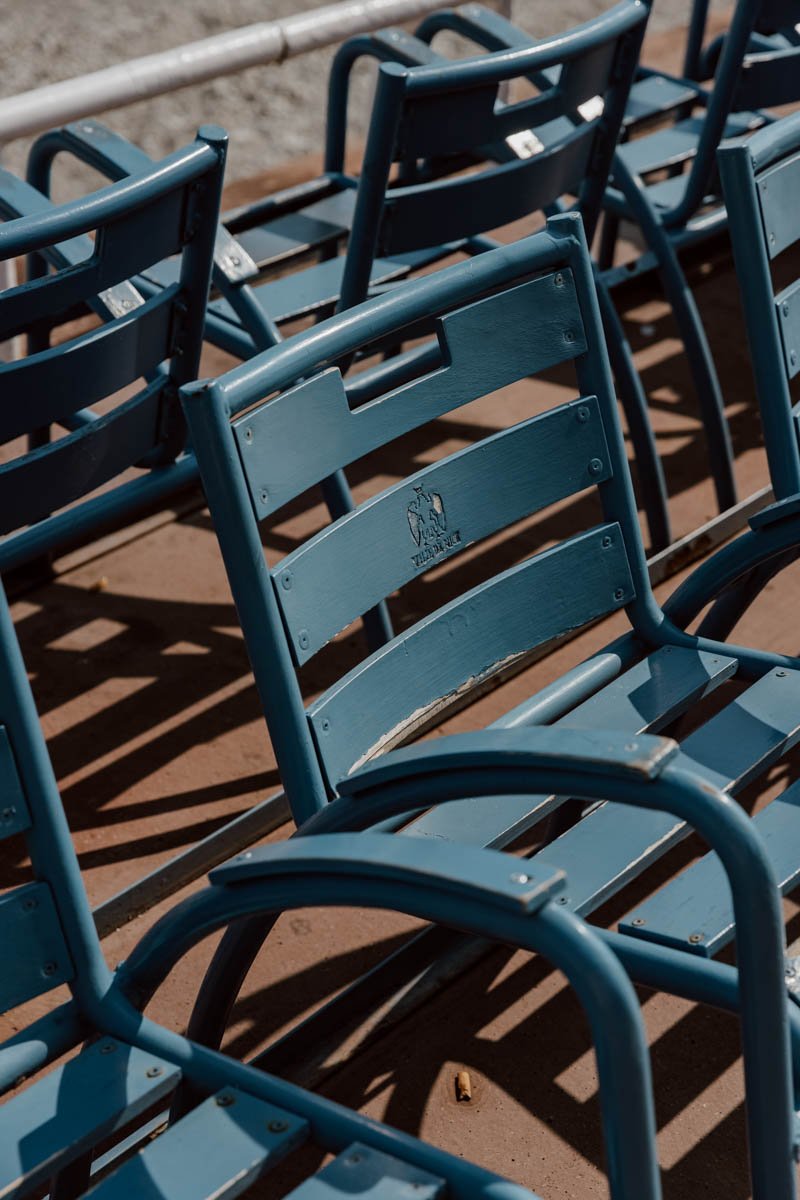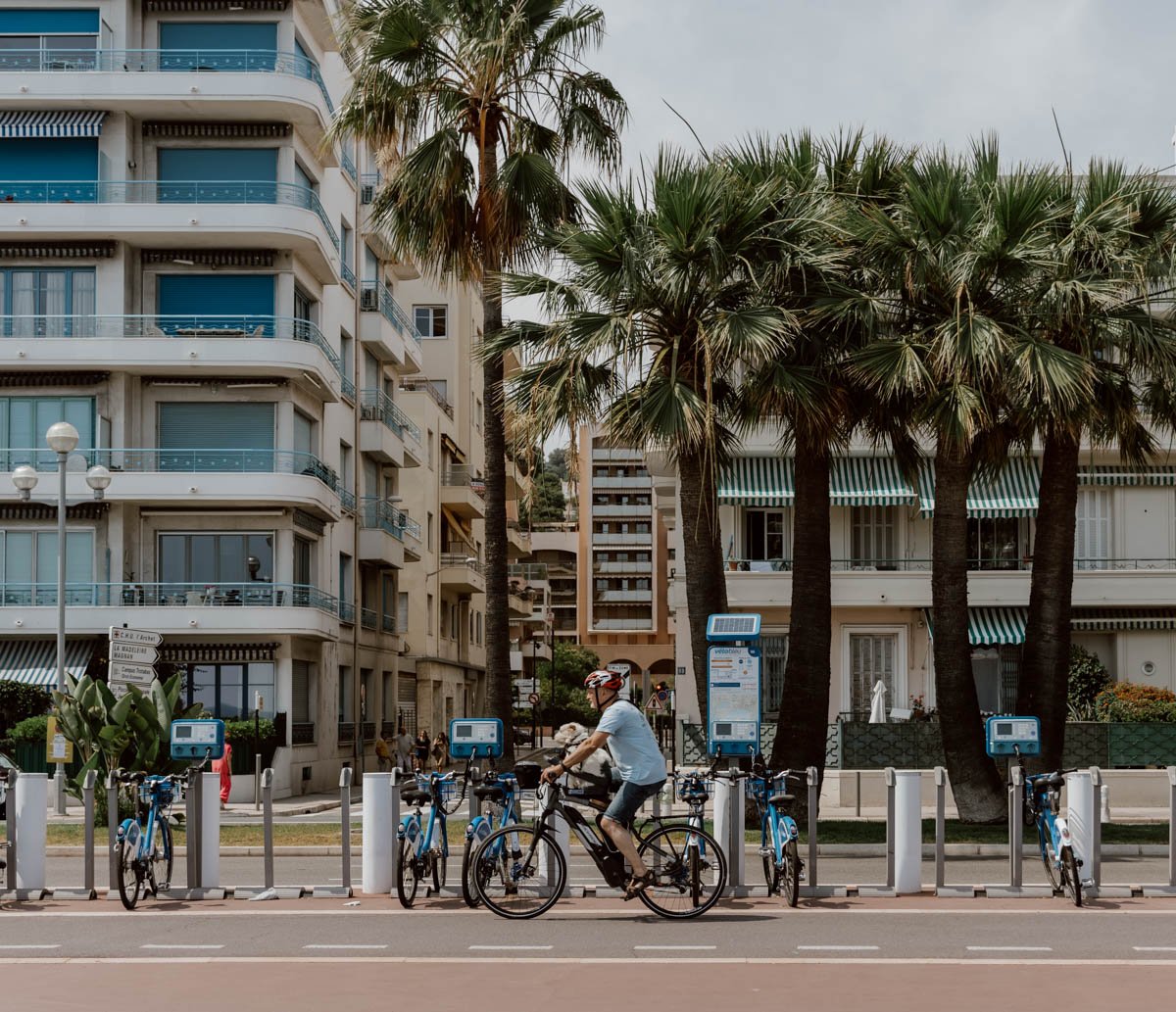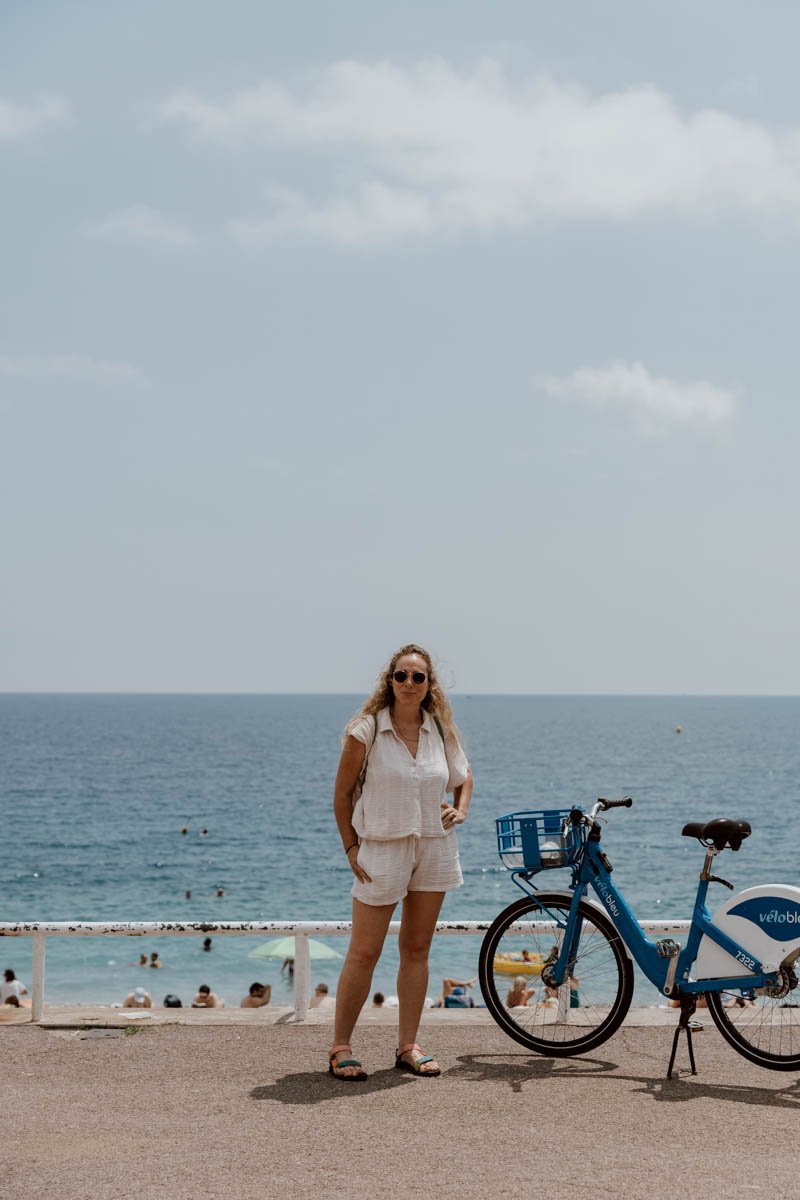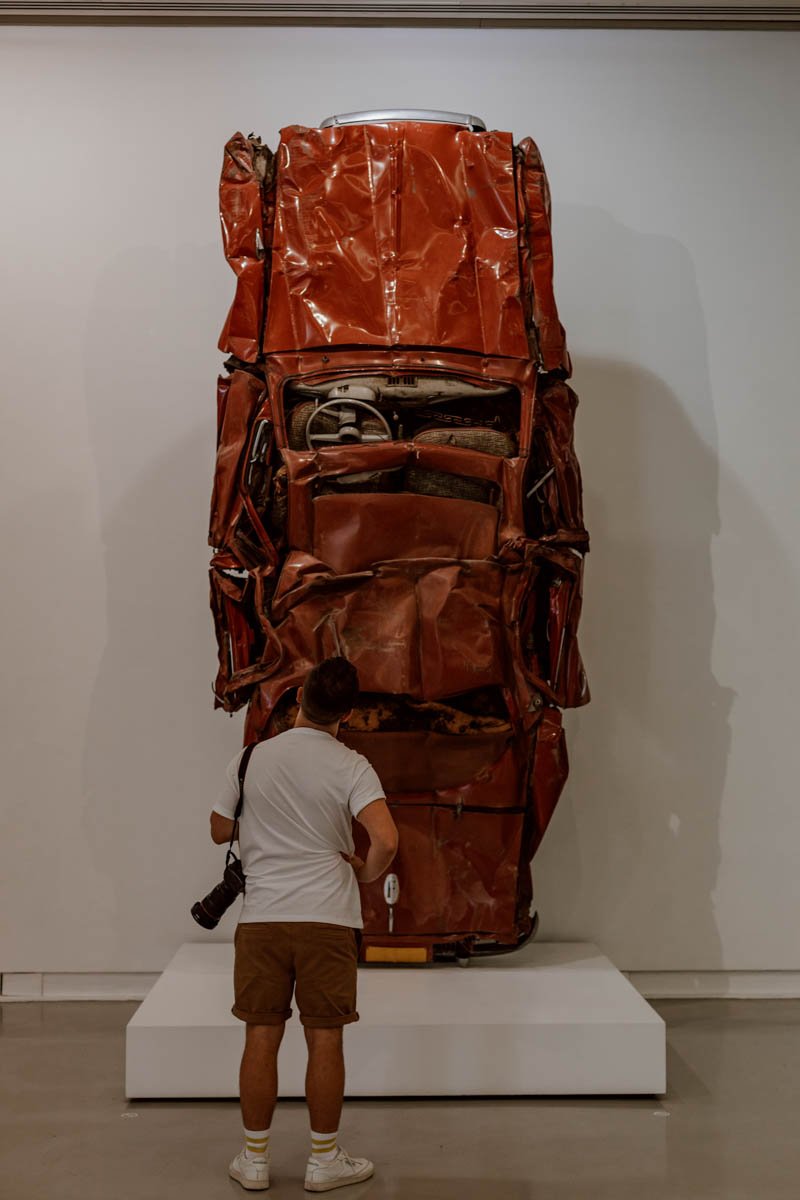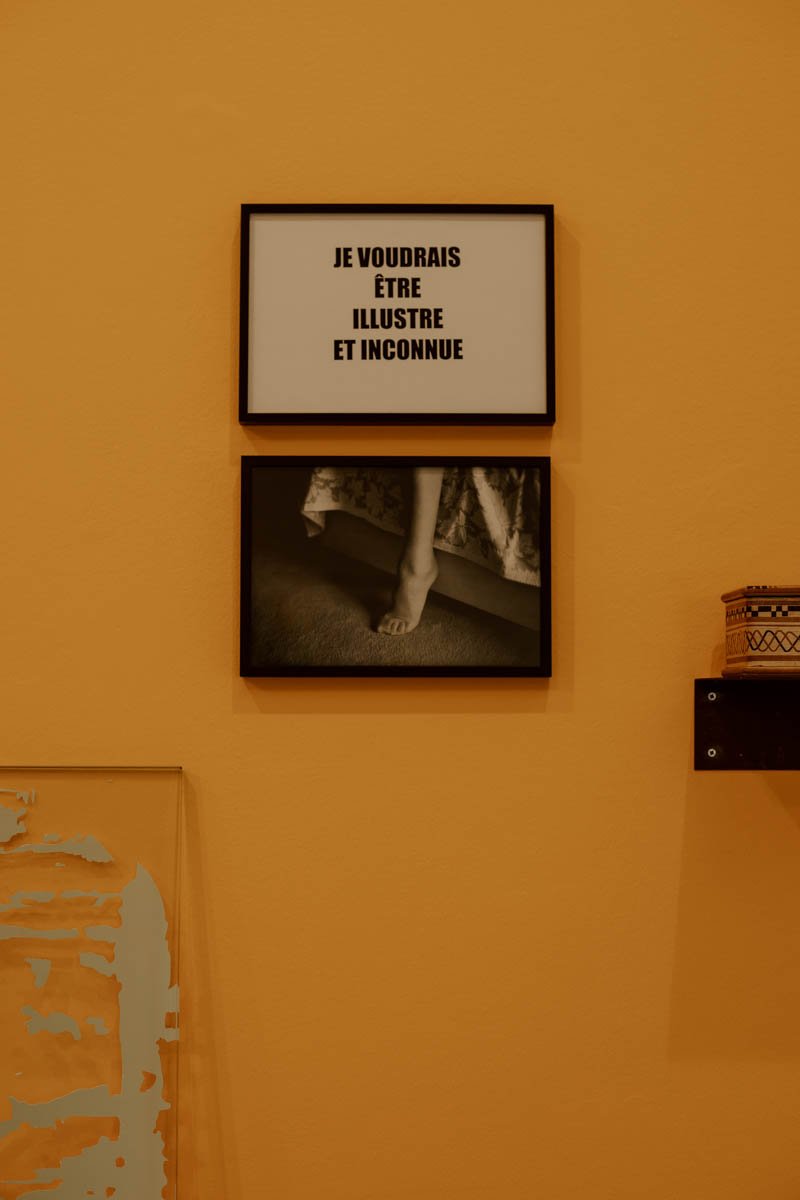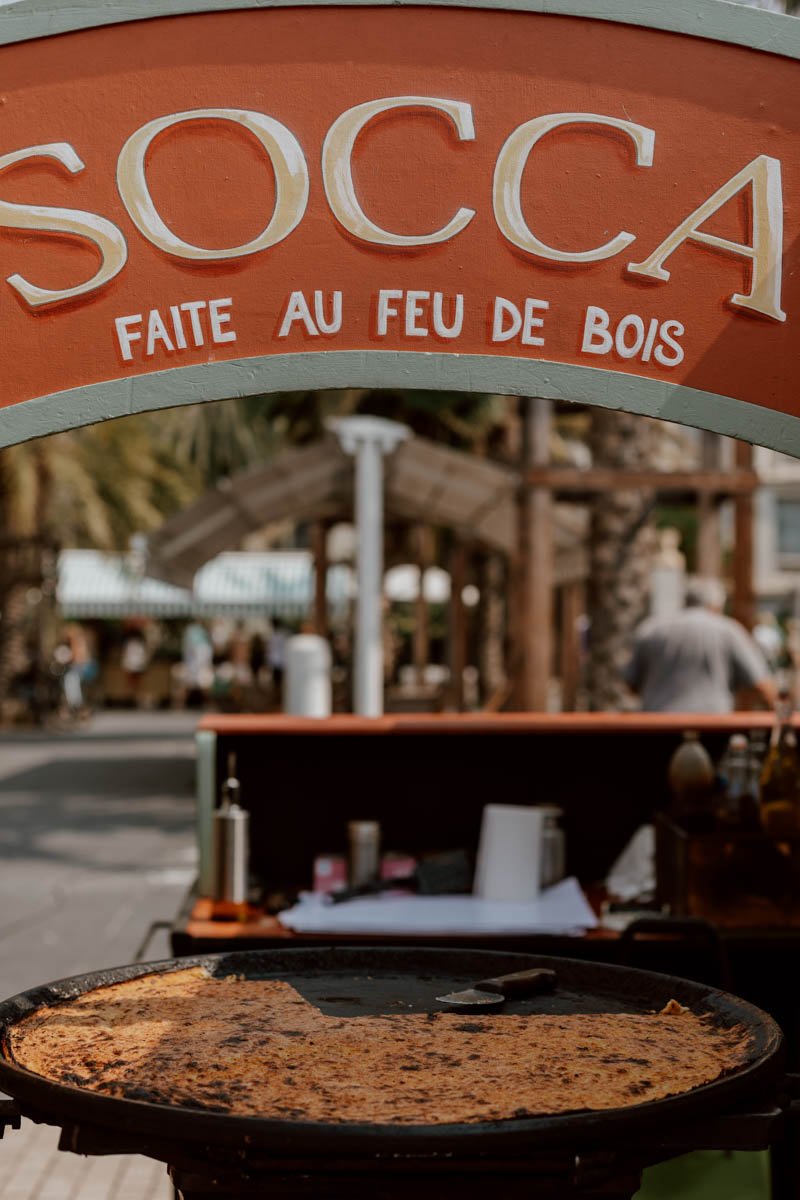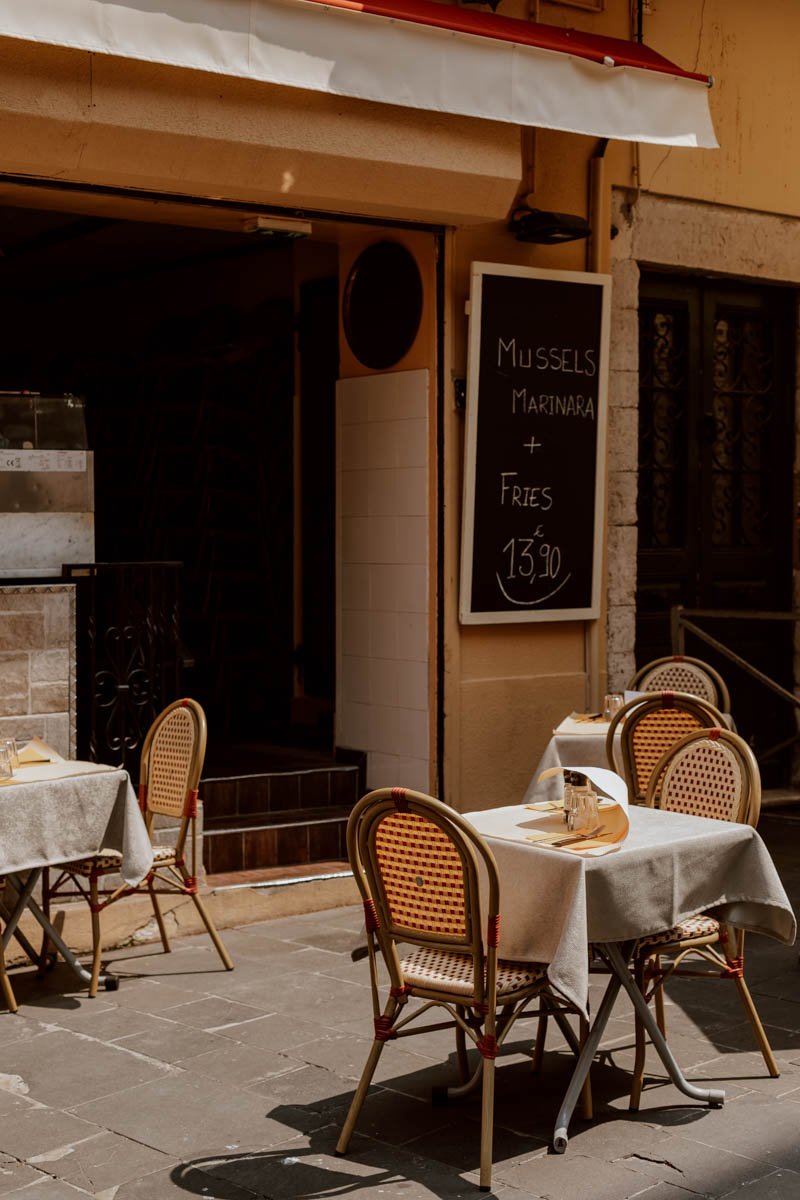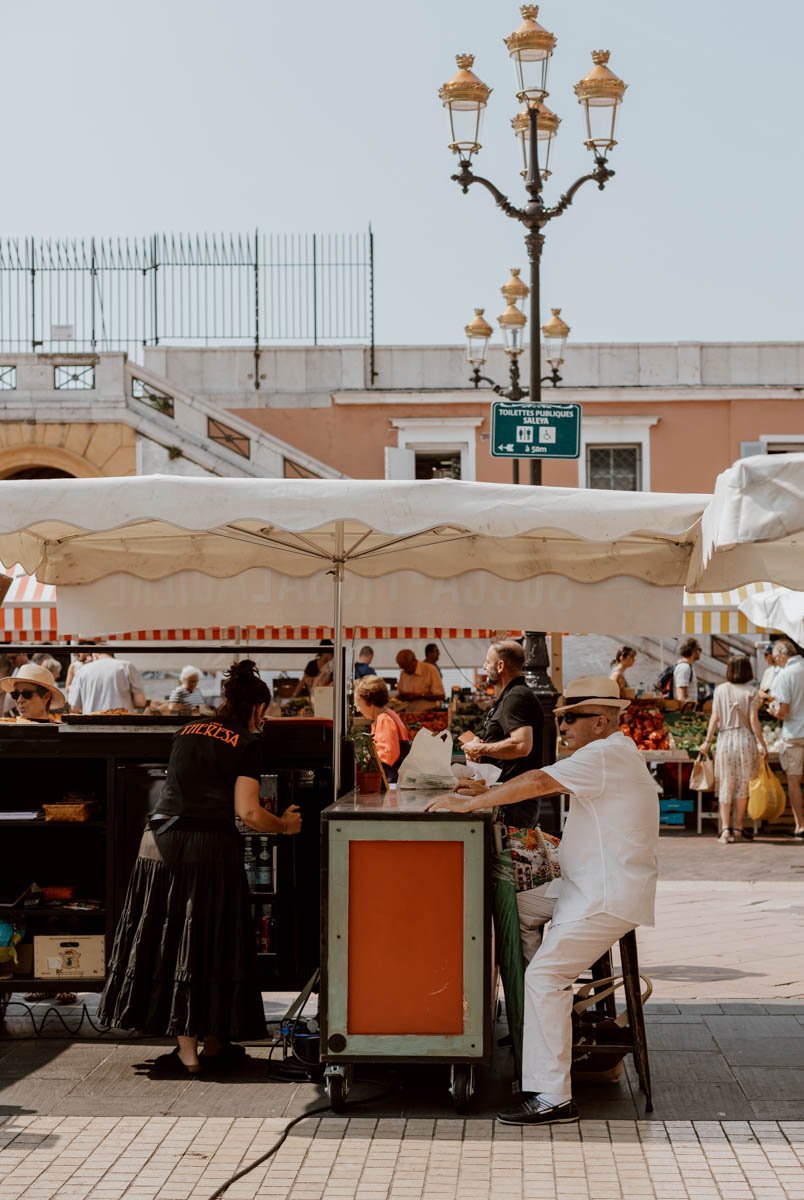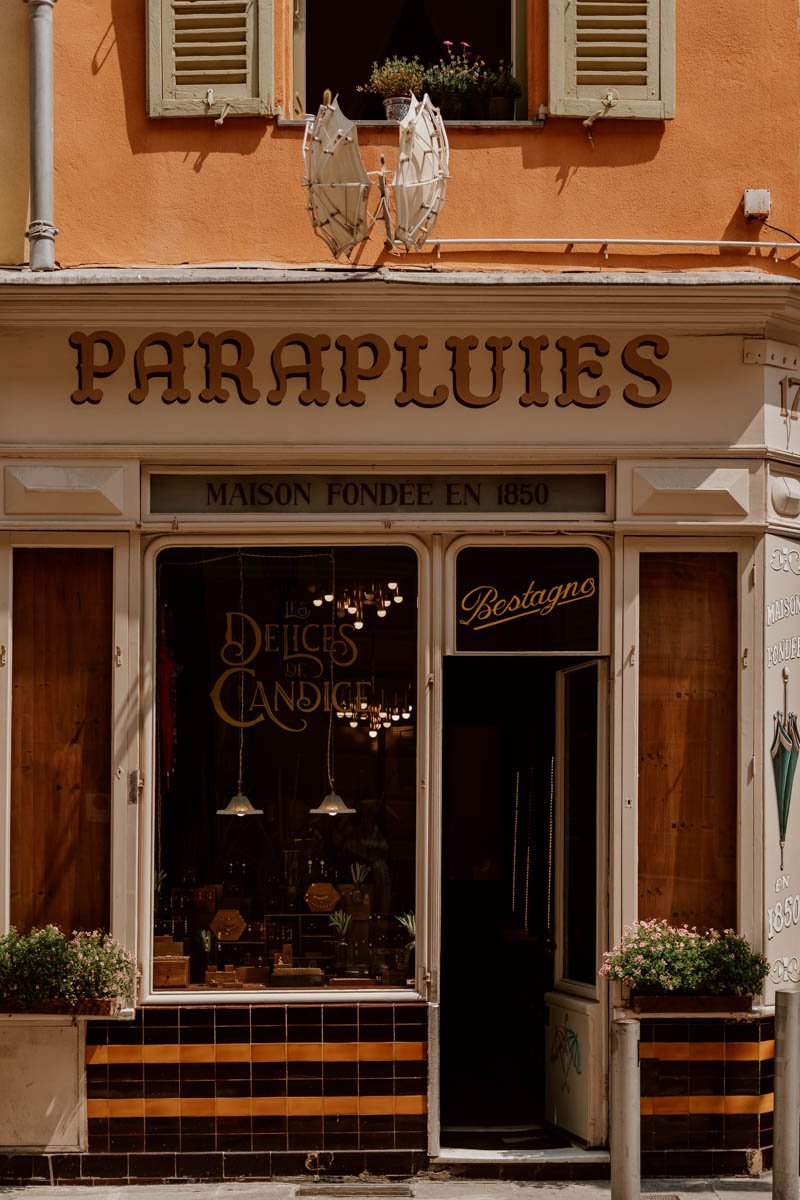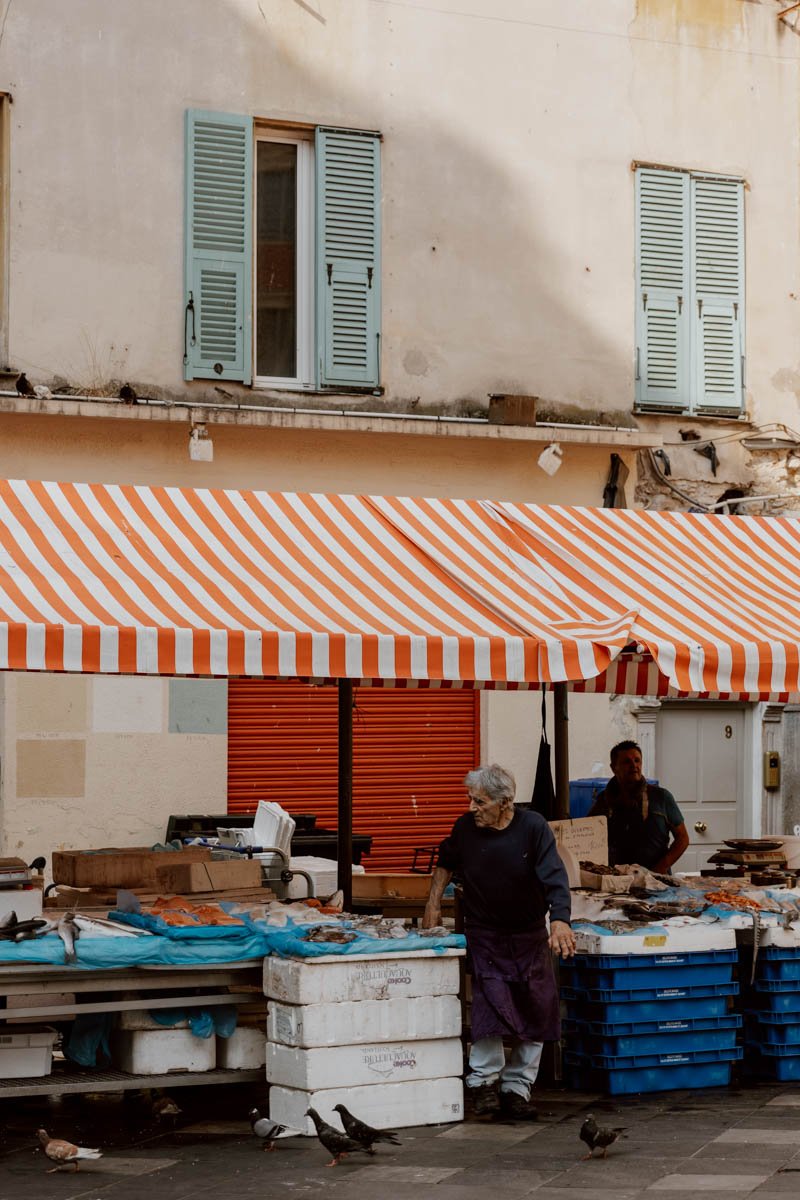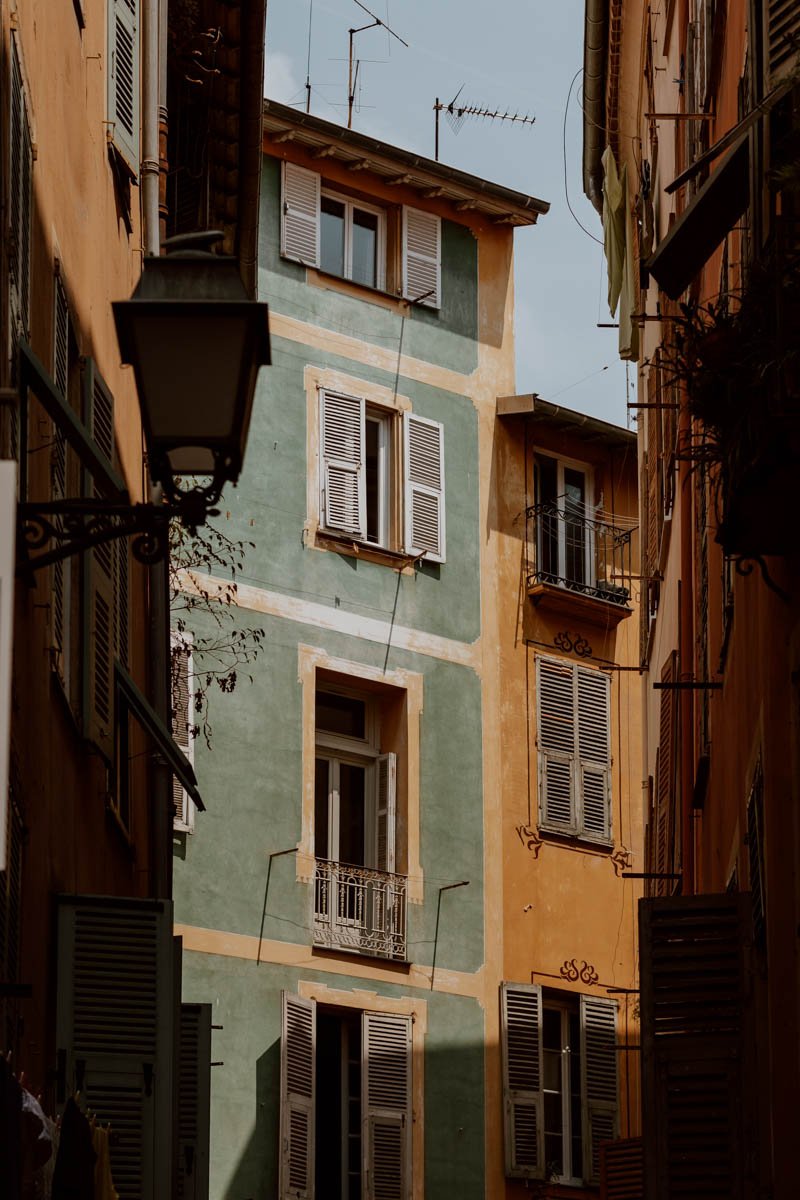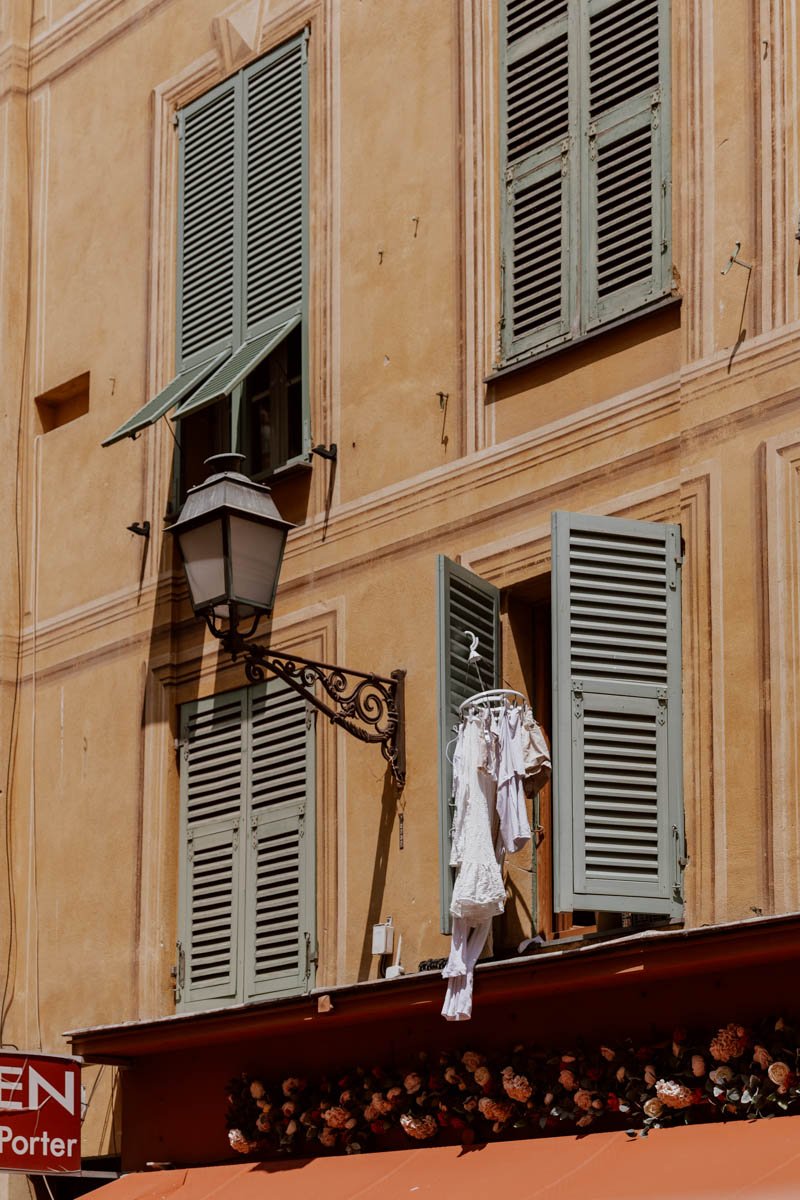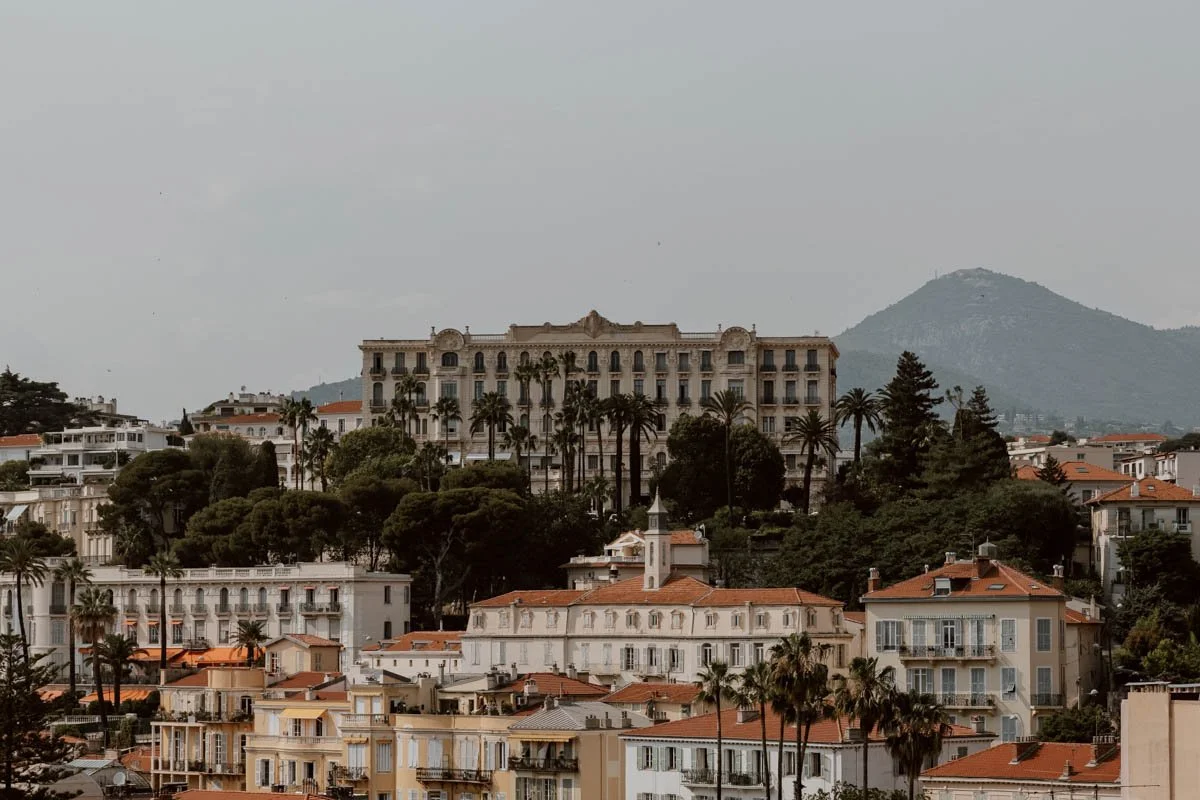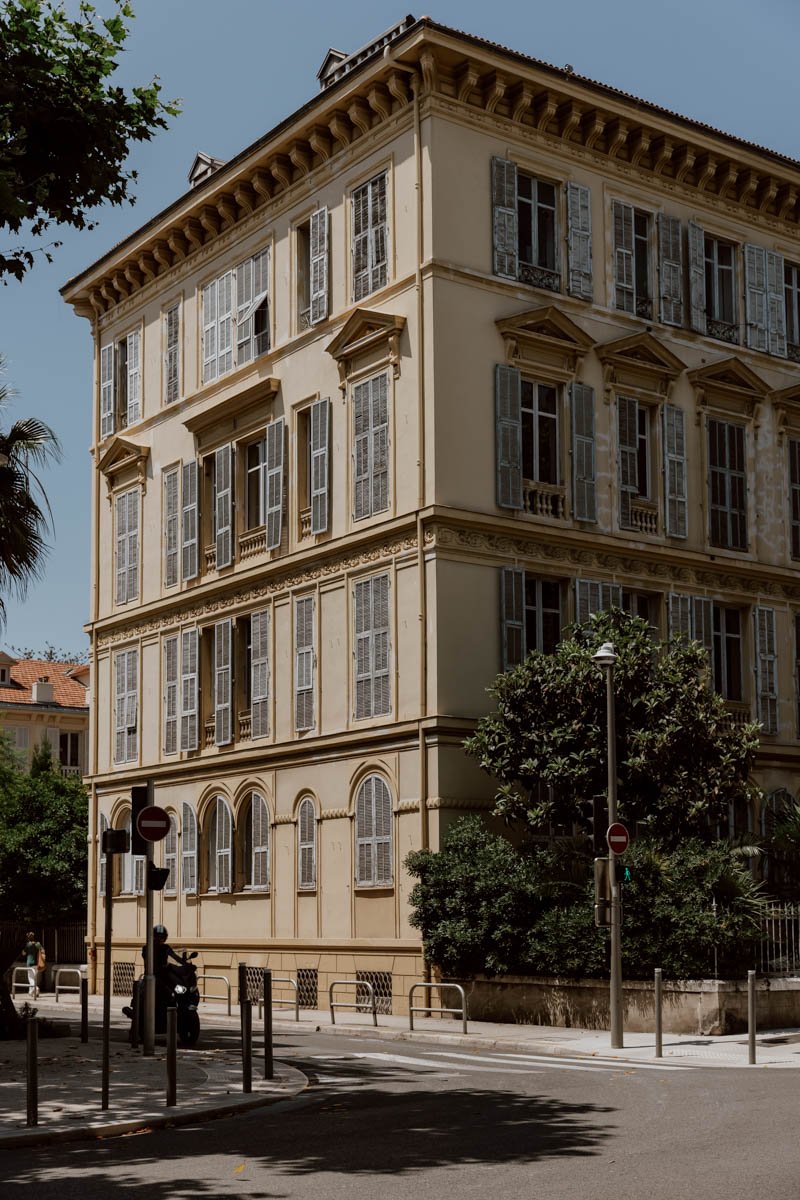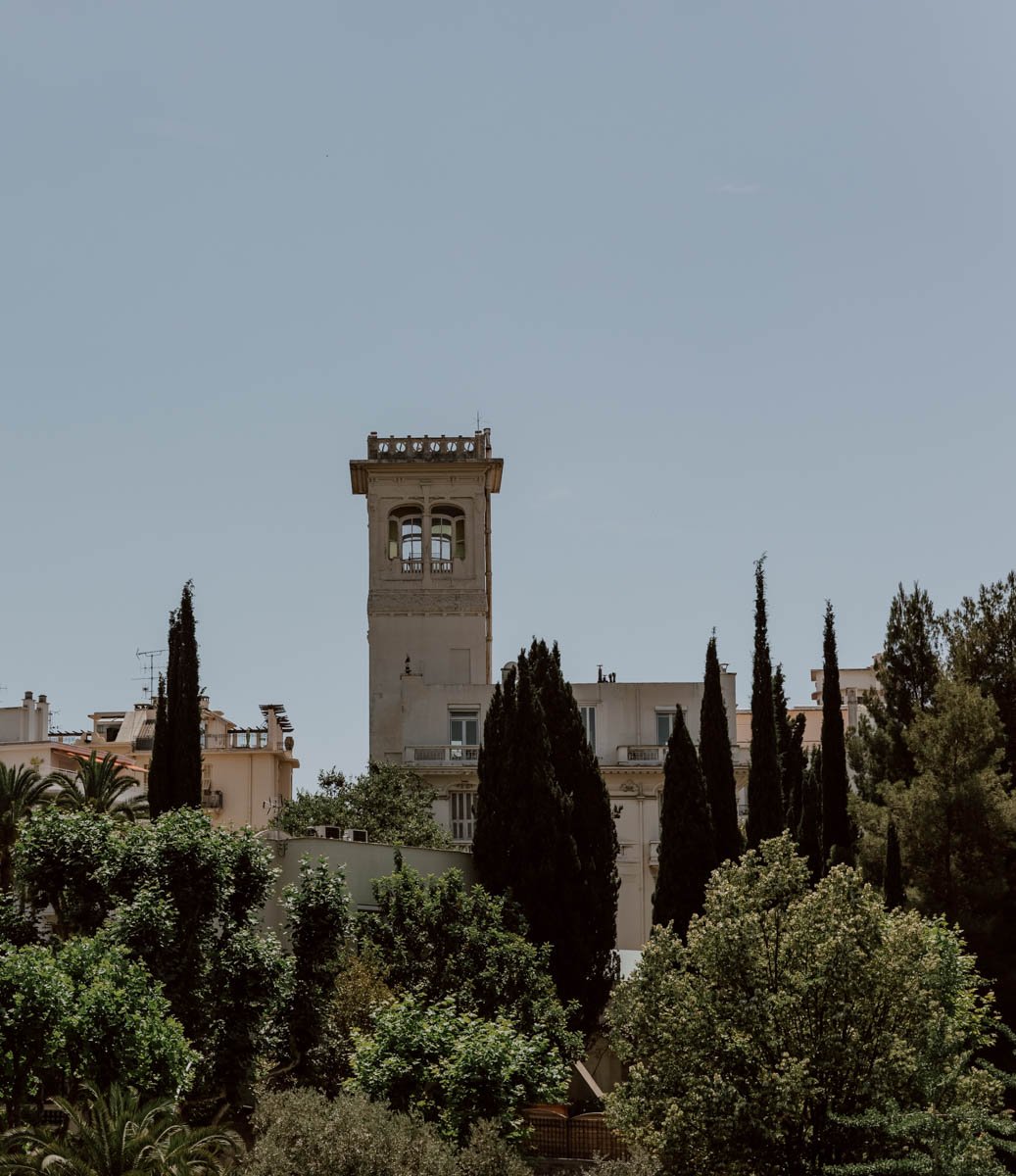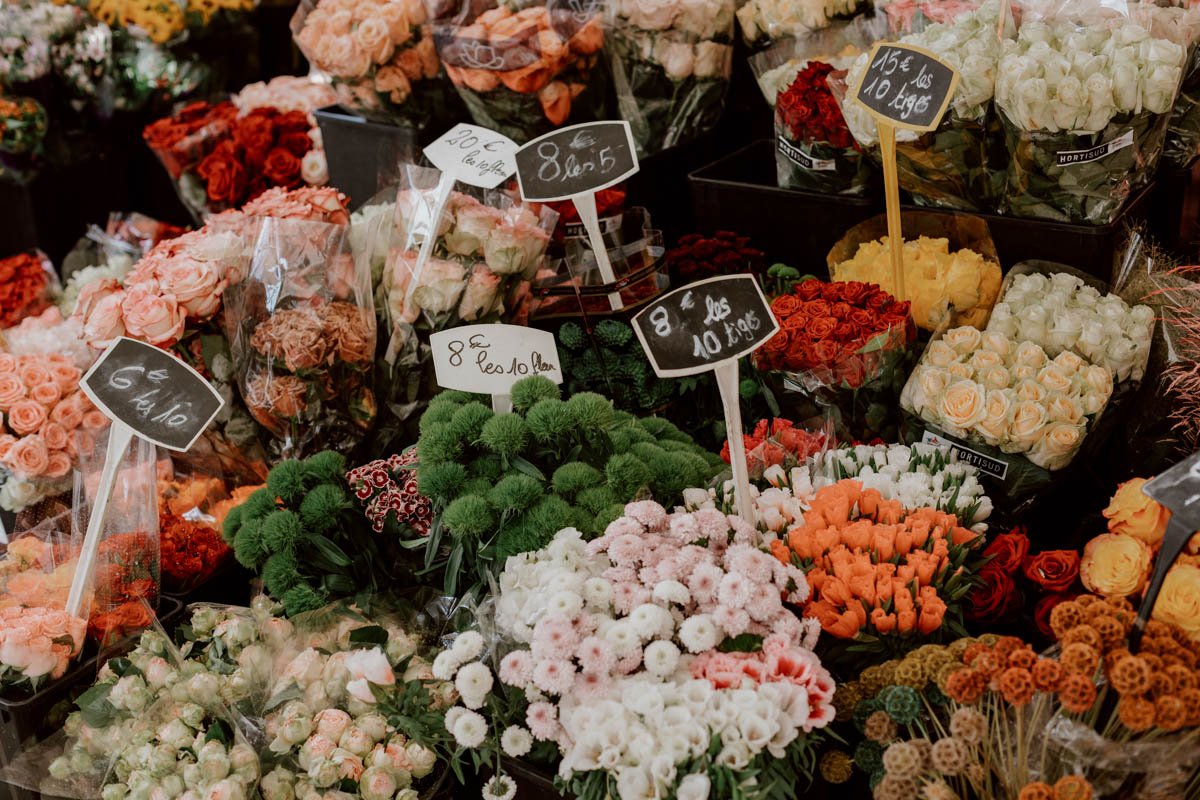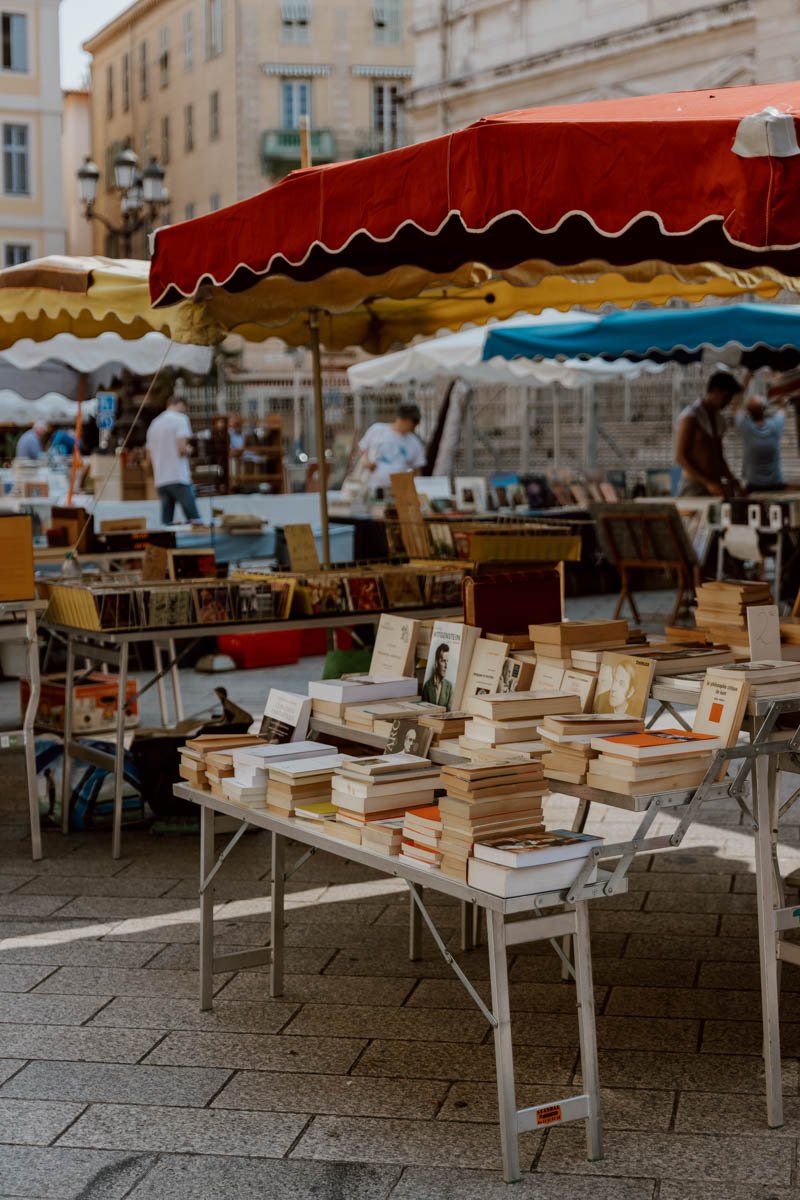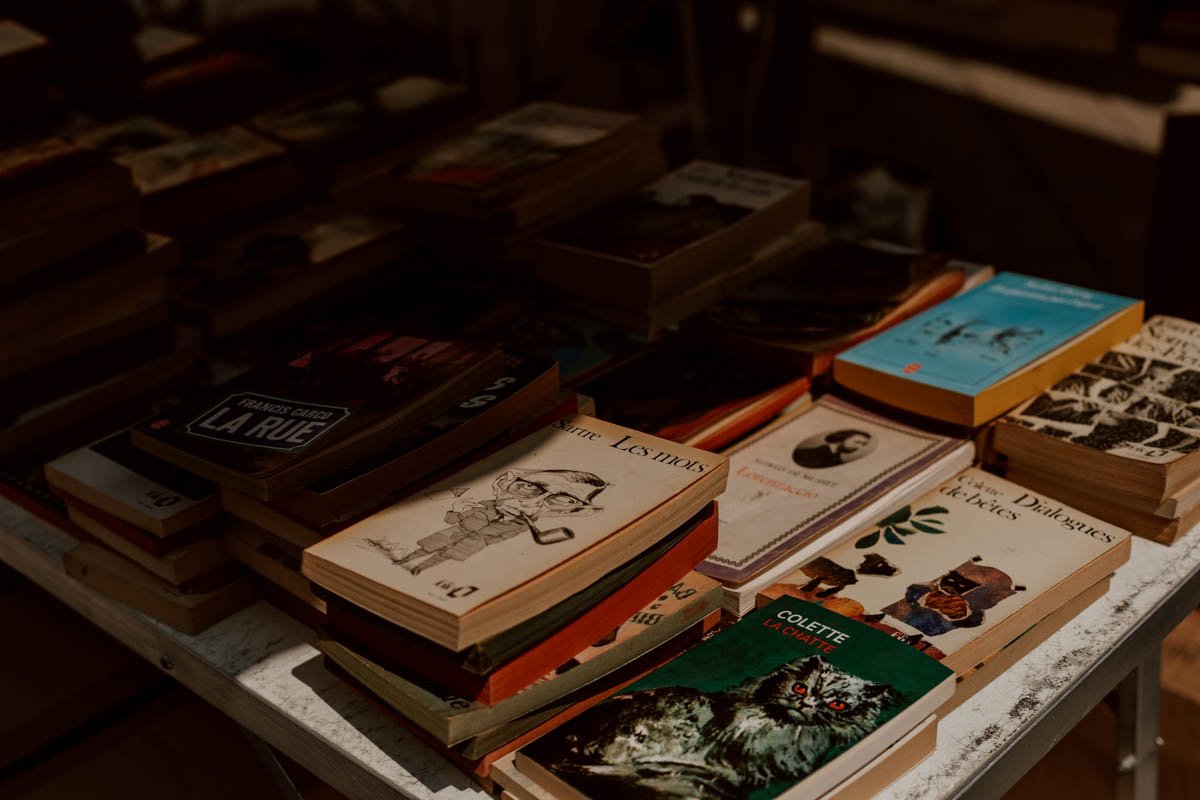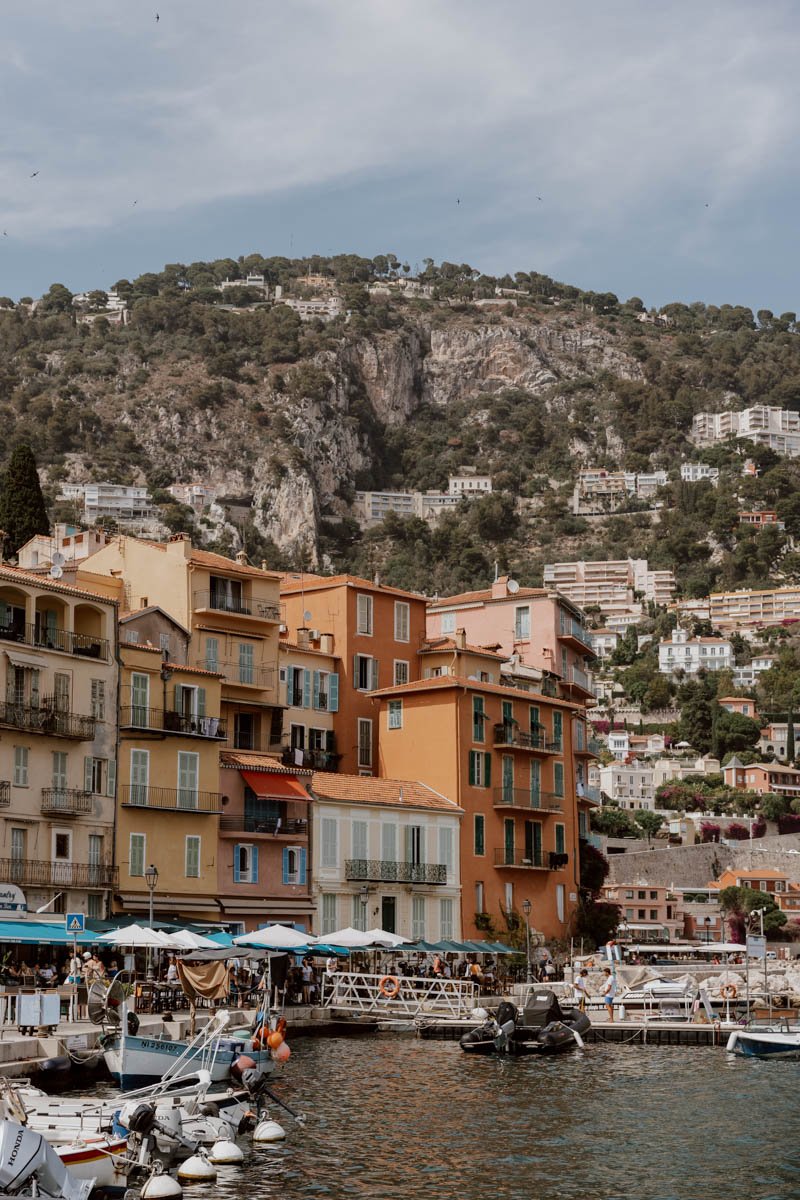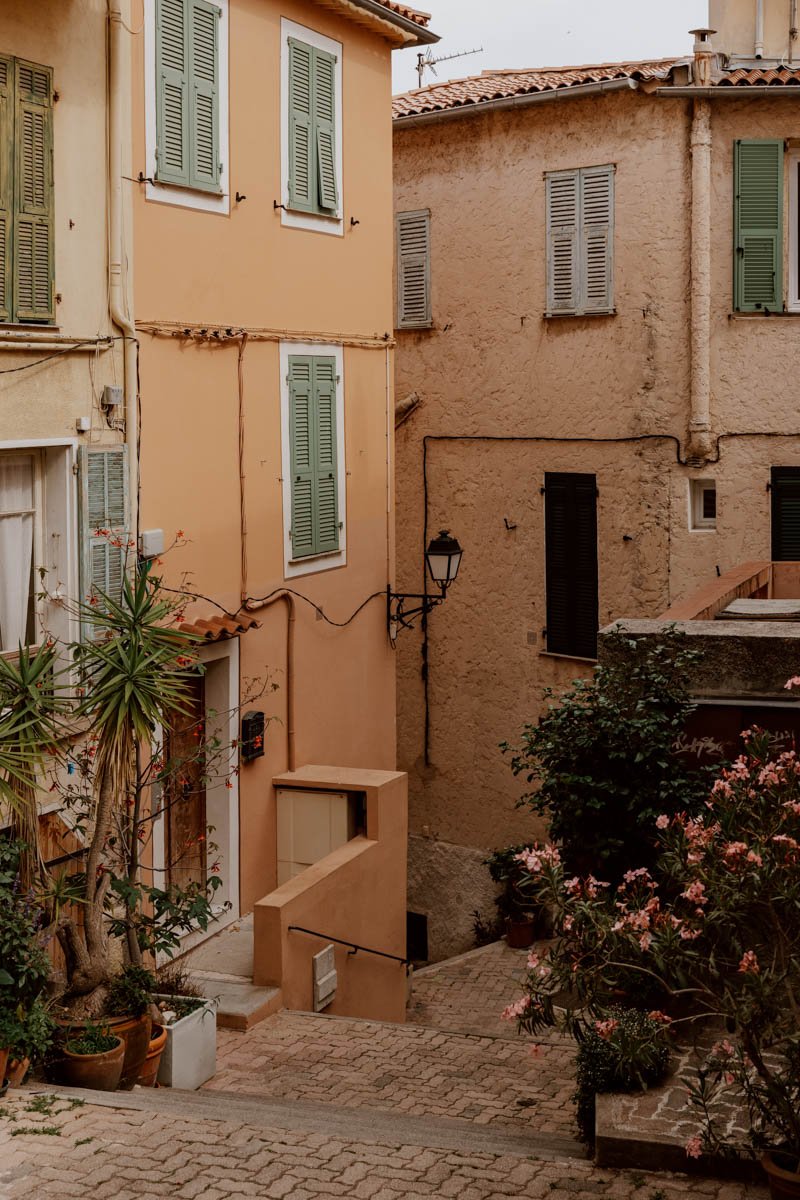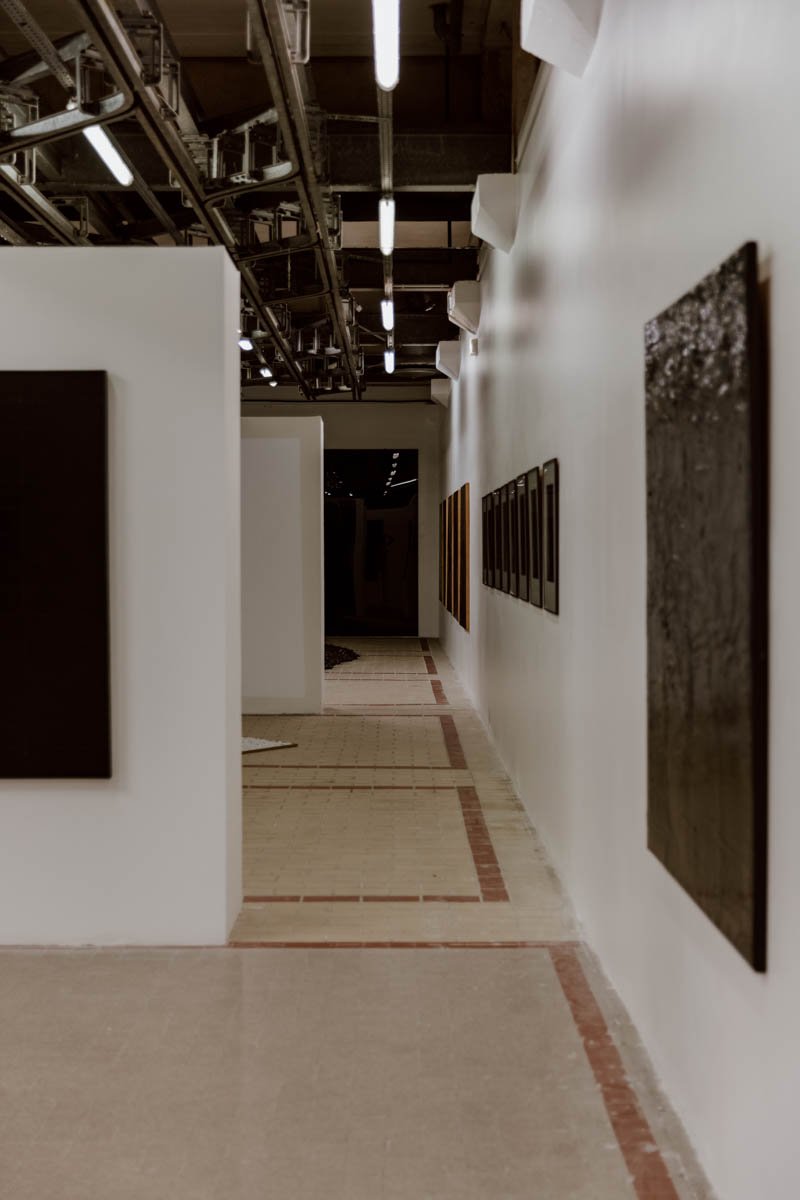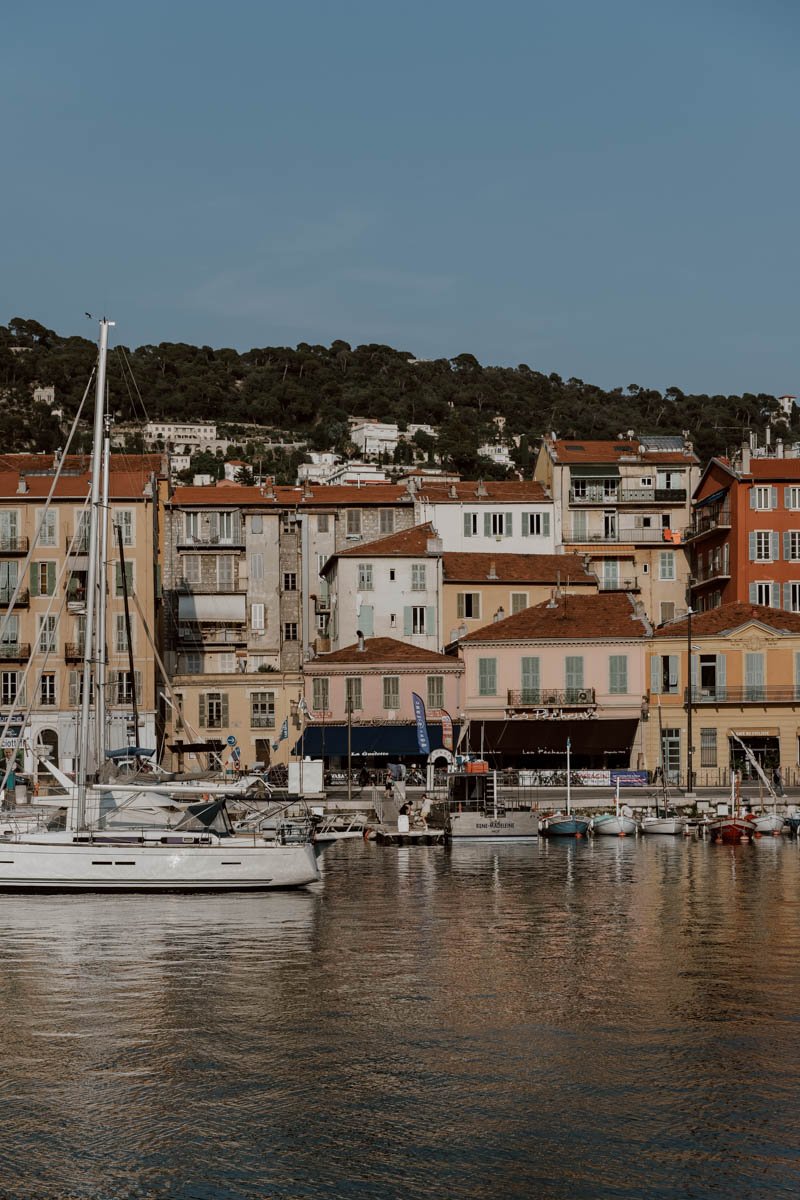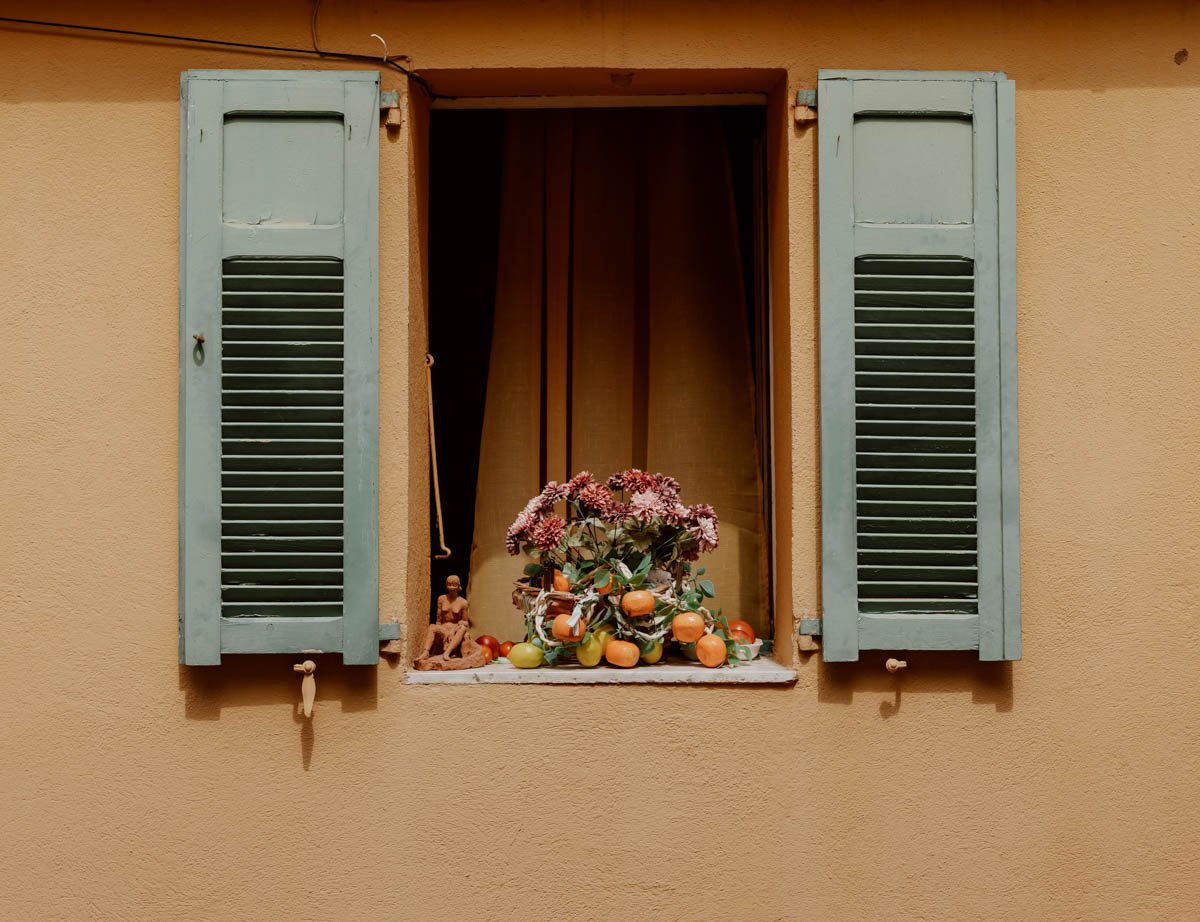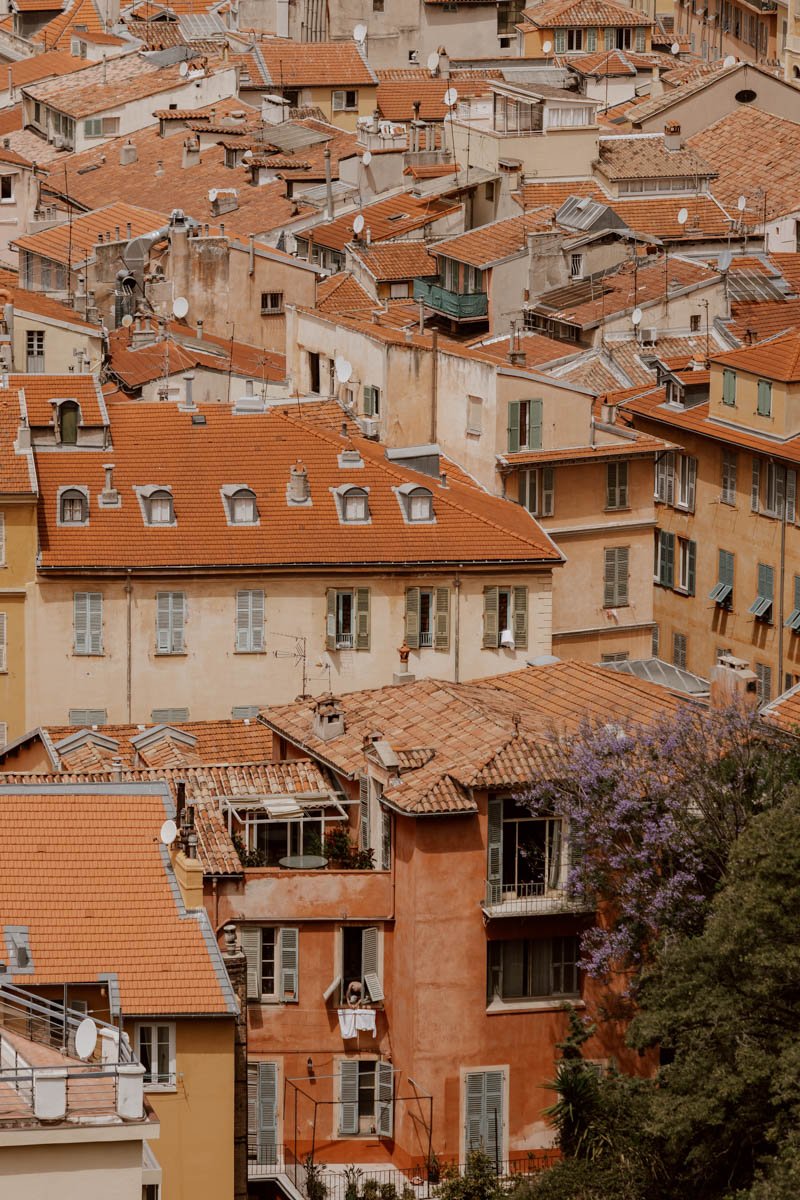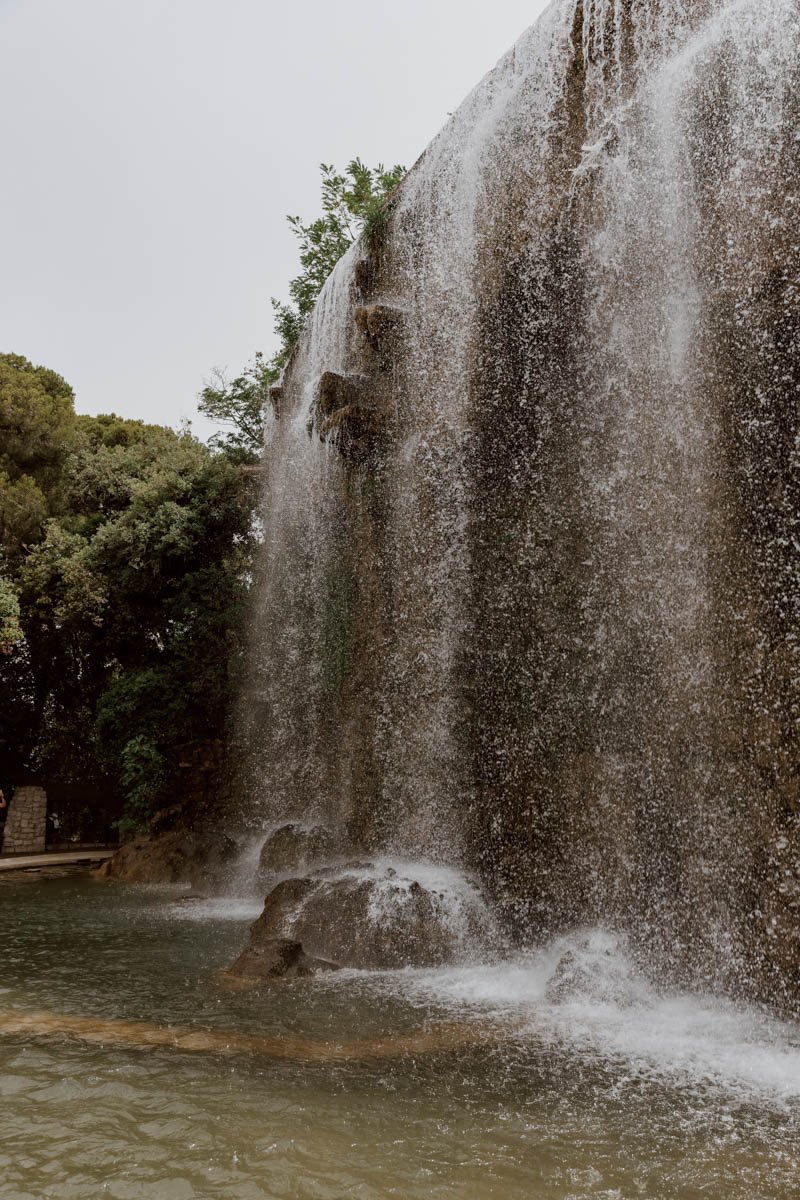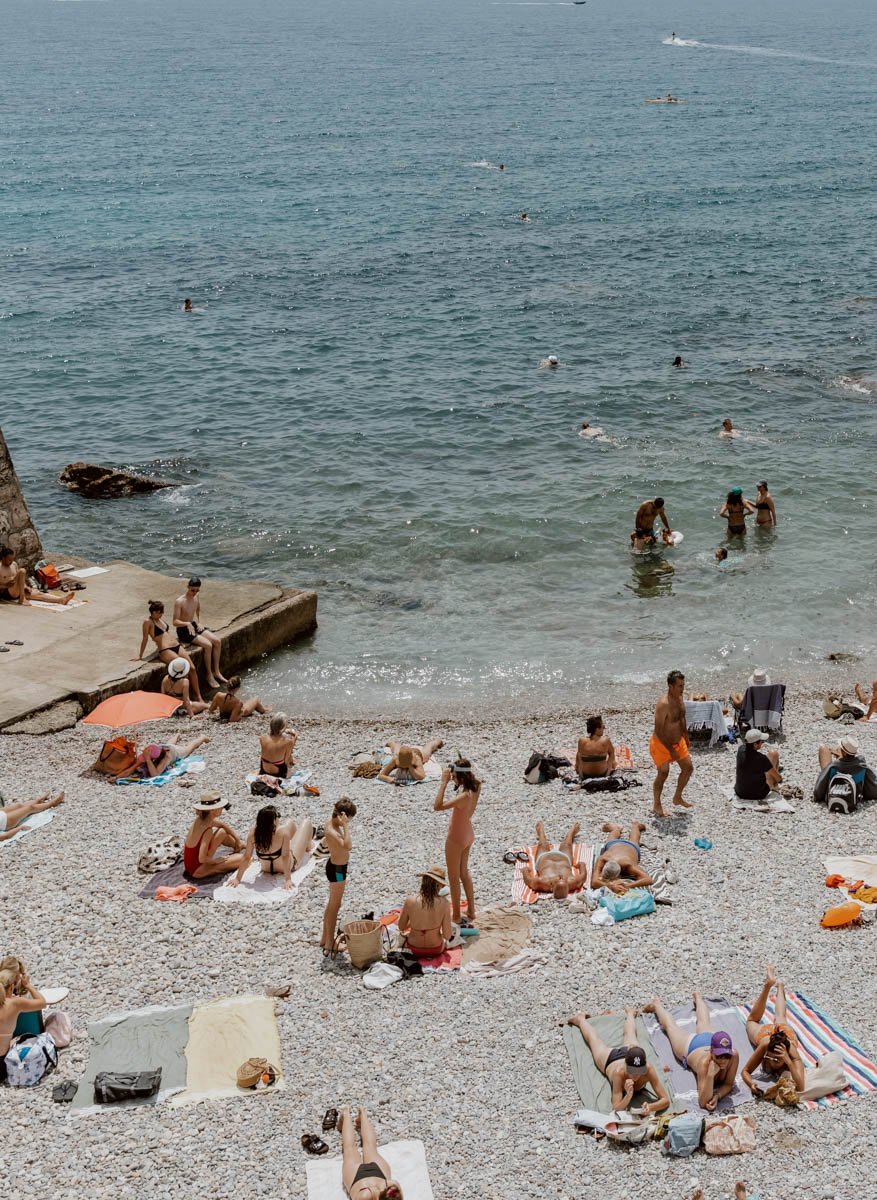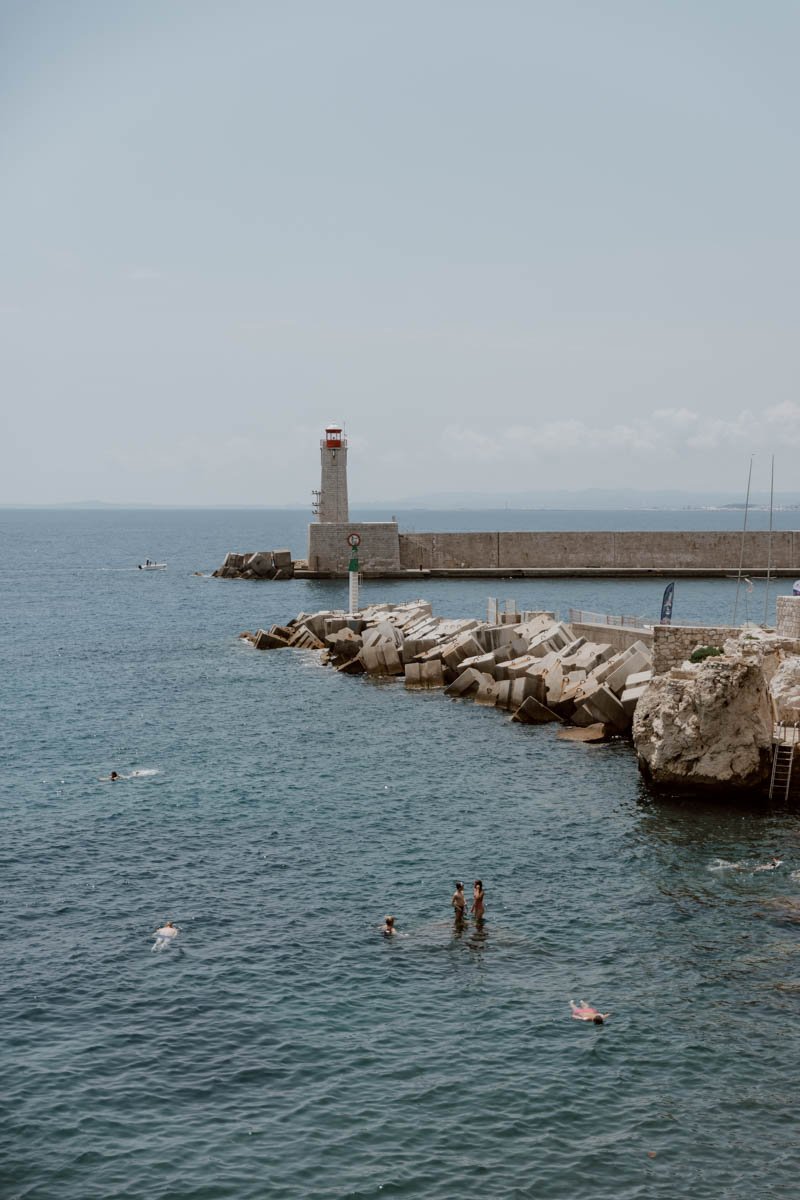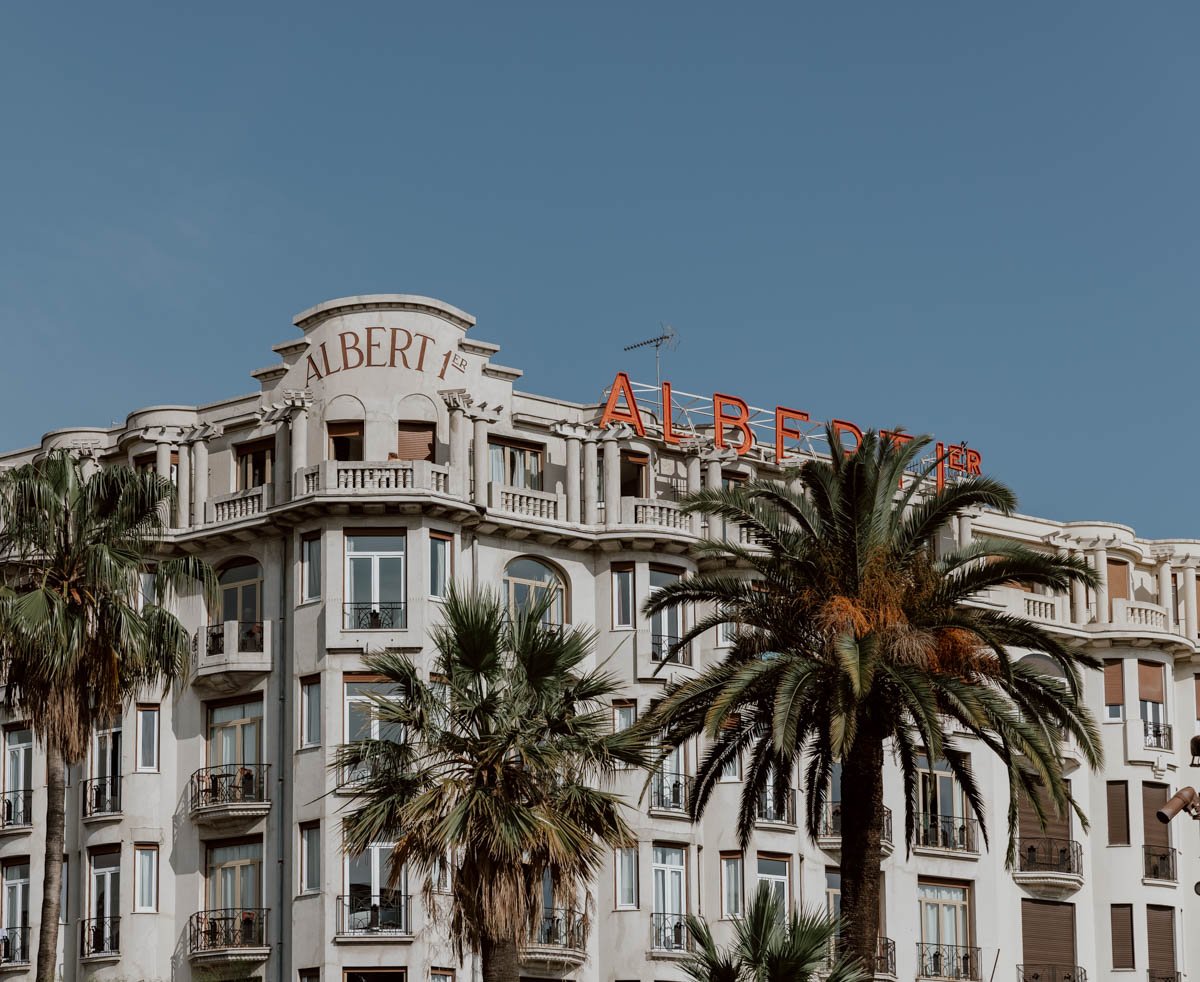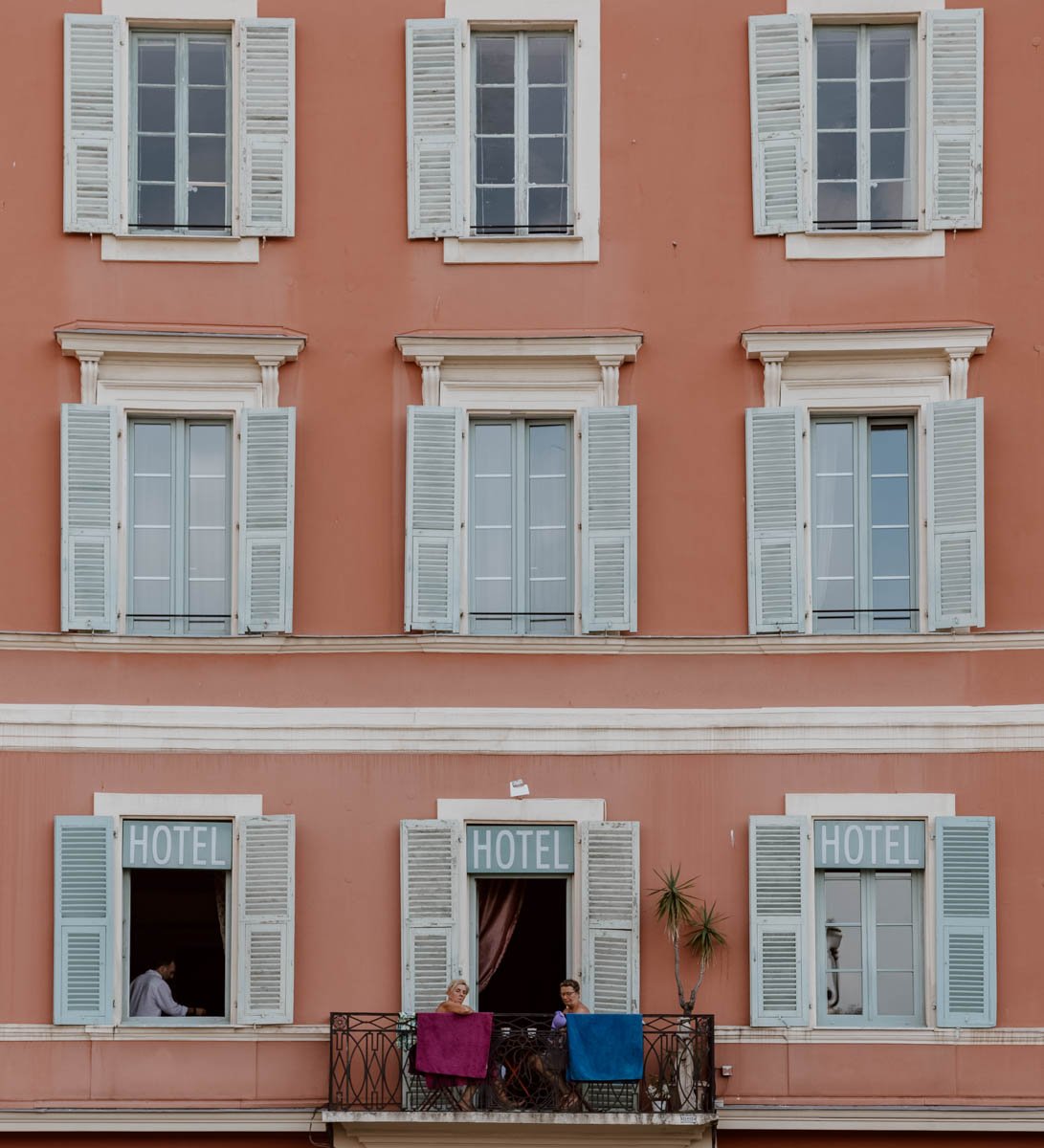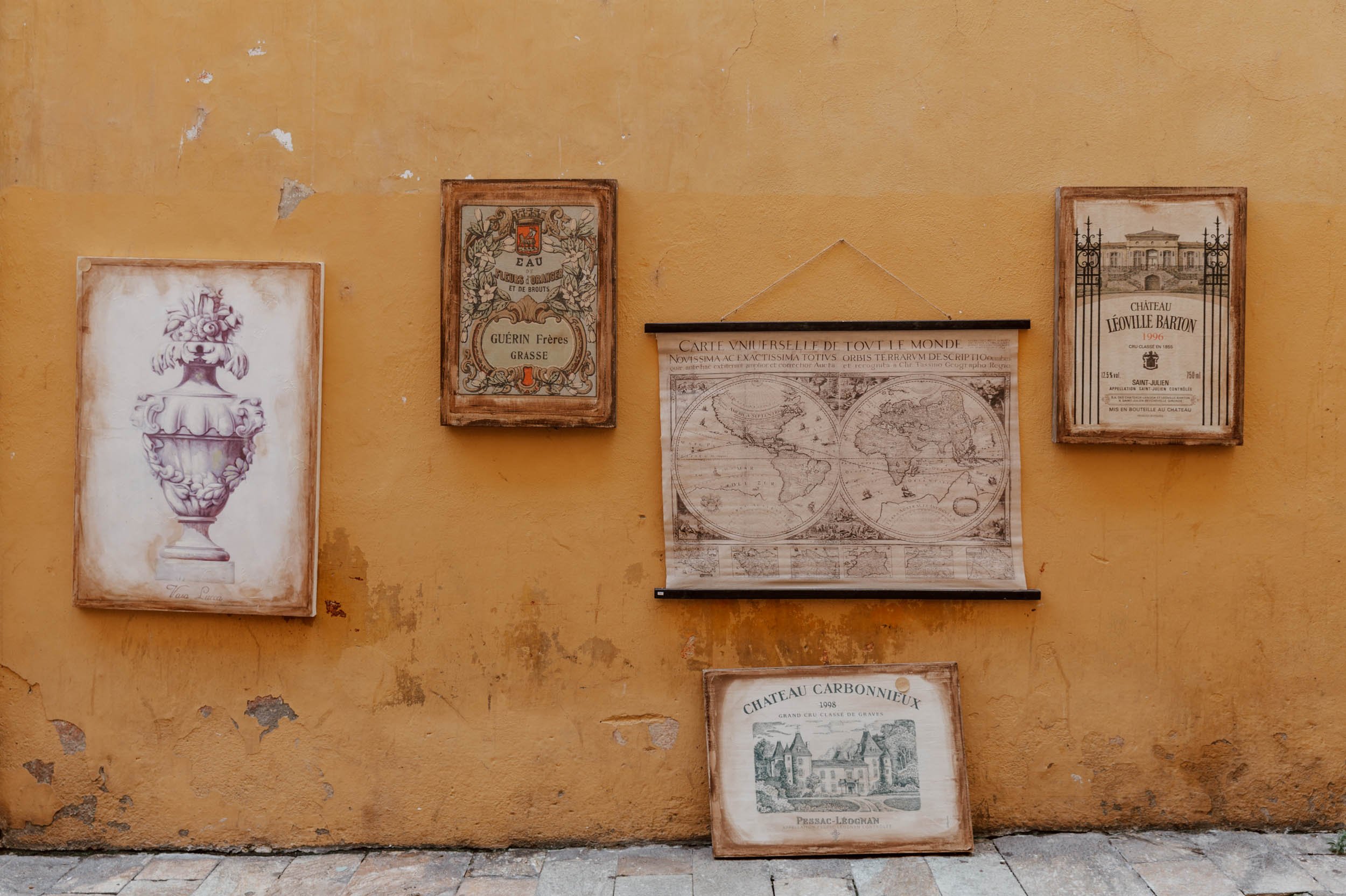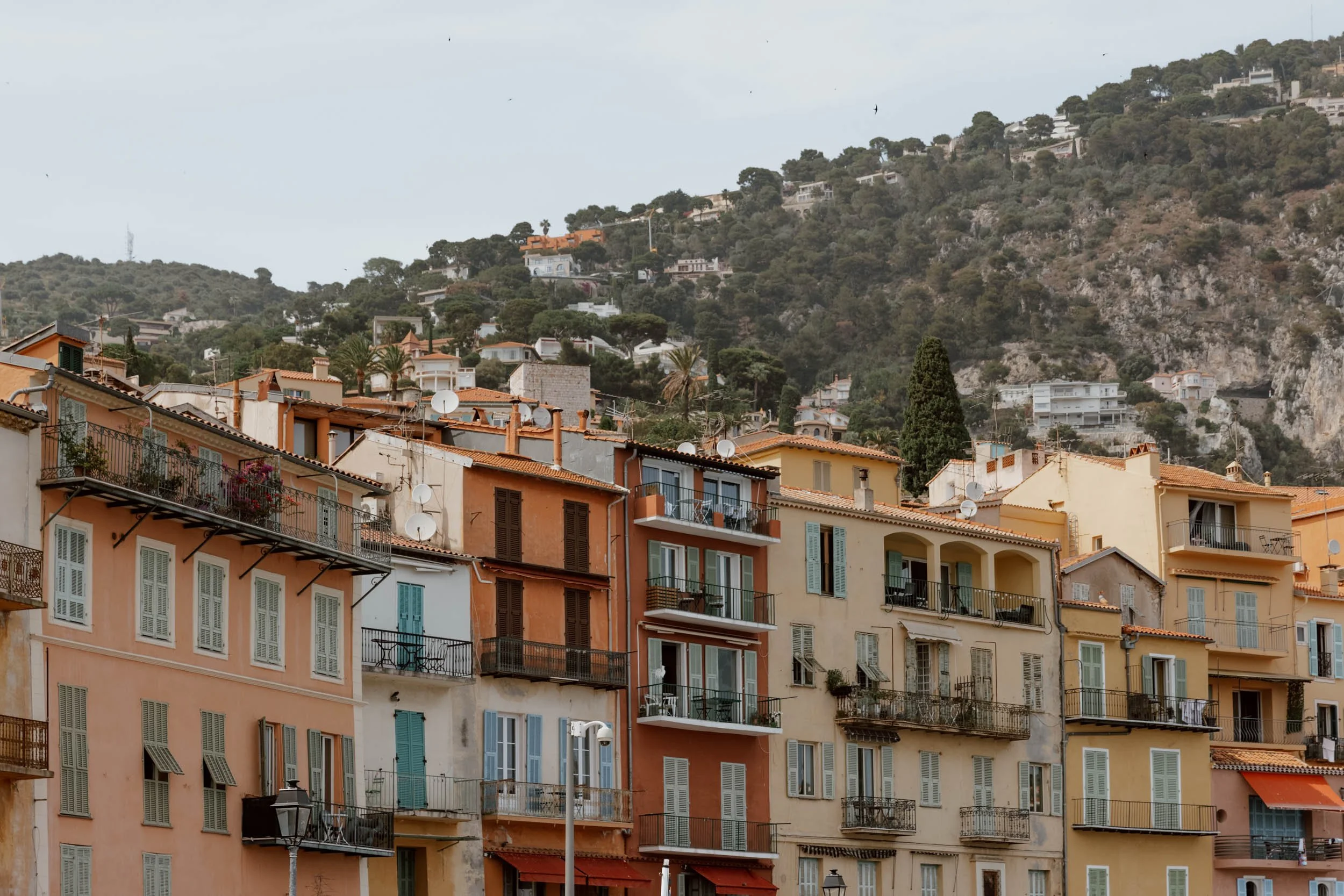Planning a trip to Nice?
Our guide's got you covered on the best things to do, where to stay, and lots of travel better tips!
Every day in Nice, a man is tasked with setting off a firework right on the stroke of noon.
For first-time visitors, the booming crack causes a frightened jump and instant concern; for locals, it's simply the signal to start getting ready for a long lunch.
The pyrotechnic tradition dates back to 1861, and the legend goes that a Scottish general had retired in the French city, but grown tired of his wife's failure to return home in time for lunch. Quite understandably, he decided the best and most reasonable solution was to pay the council to set off a cannon each day at noon from atop a hill as a not-so-subtle reminder to the missus to get a move on.
It's a move we've probably all considered at one point or another when faced with a less-than-punctual partner and an empty stomach, and the citizens of the city became so used to the daily reminder that Nice's noon boom became as integral a part of the city as pan bagnat, blue chairs at the pebble beach, and the works of Matisse.
Its origins are however up for debate…
With a reputation as the place for the well-heeled and a glamorous gateway city to the stunning French Riviera, a year and a bit living in France and several trips there had never seen us tempted to go to Nice. Other places in the south - like Marseille, Avignon, Aix-en-Provence - were always more appealing, and we weren’t certain that Nice would be a good fit with our travel style.
Thankfully, we found over a four-day early summer stay that we were totally wrong.
For us, a fantastic feature of staying in Nice is that it allows you to easily blend several quintessentially French and Mediterranean travel experiences together in one city and stay.
You can choose to emphasise the cultural, foodie, pretty old town, beach, history, artistic, active, decadent, or train-hopping along the Riviera one day, and then switch it up entirely the next without much effort. It's perfectly possible for one set of visitors to have a very different set of plans or itinerary to another, but both leave with a very positive impression.
In this guide, we've shared our favourite places and experiences in the popular capital of the French Riviera and fifth largest city in France. Whether you're visiting for a day trip, city break, or as a part of your explorations in the south of France, you'll find everything you need to plan perfectly with our insider tips and recommendations on where to stay, places to eat & drink, the best things to do in Nice, and the truth behind the cannon.
This is 13 Wonderful Things To Do in Nice - the French city where everyone's afternoon is guaranteed to start with a bang.
the nice essentials
In / Easy access from airport (tram, taxi or private transfer)
Seafront / Spend the day along the city’s pebbly beach or enjoy it on a walk along the Promenade des Anglais
Visit / Some of Nice’s most popular museums and art galleries (don’t miss Matisse or MAMAC)
Eat / Indulge in the regional specialities (or join a food tour to discover the locals’ favourite haunts)
Explore / Wander the pretty streets of Vieux Nice without a plan or join a walking tour to learn their history
Head / Take a day trip to Villefranche-Sur-Mer or other popular locations along the French Riviera
Shop / Don’t miss Marché Aux Fleurs Cours Saleya
Alternative / See a different side of the city at Le 109
Drink / Grab a cocktail at a bar in Place du Pin
Vista / Take in the views from Colline du Château
Stay / We loved our little Airbnb in Le Petit Marais district
13 wonderful Things To Do in Nice
Sunbathing and Stones on Nice Beach
Sunbathing on Nice's long stretch of beach may form a big part of your days, but for others it may simply provide a scenic backdrop to stroll alongside. However, there's no doubt that having a 4km stretch of pretty excellent beach right next to the city is an essential part of Nice's enduring popularity, and you’re usually only a few minute’s walk from the sea.
Running from the airport in the west to the marina in the east, Nice's beach is close to 4.5km long, and easily accessed on foot from the old and new parts of the city. It stretches for so long that you can always find a space, even in the peak summer months. With surprisingly calm and clean water, it's great for kids or those who don’t love waves.
However, the kicker is that Nice beach is composed of large, smooth grey stones, not soft sand.
They're not the most comfortable initially (rocks aren't the most malleable material after all), but your body does eventually settle into a groove; for some travellers, the rocks might be a big issue and affect your enjoyment, but for others it's won't be. A towel or beach / yoga mat makes a bit of a difference, but it's easy to discern between locals arriving with all the right kit and day trippers shifting about to find a comfortably compromise. The rocky terrain also means it's a good idea to keep your shoes on when walking to and from the water, especially if they've had the hot sun on them for a while, and some may wish to invest in sea shoes.
The vast majority of the beach is public and free to access, but there are a dozen or so beach clubs as well - we've explained these a little more below, and they offer an alternative to those put off by the rocks.
Some guides you read might split Nice's beach into several distinct beaches, including L'Opera, Ponchettes, Carras, Forum, Florida, Magnan, and Sainte Hélène. Personally, we think this is a bit misleading as there isn't that much distinction along the length of it: the rocks remain the same, the swimming and quality of water remains the same, and the only big shift is when you find the part of beach specially set aside for doggos (this one)! Most free beaches have showers, some have lifeguards, and some area designated as non-smoking, but we couldn't tell you that one specific part is necessarily better than another beyond the fact that the sections just in front of Vieux Nice are the busiest, particularly at sunset when lots of visitors hang out on the pebbles with a takeaway pizza.
Note that, for the sections outside the old town beach zone, there are few bars, restaurants, or shops on the beach, the promenade running parallel to it, or across the road. We assume this is all intentional to retain a sense of exclusiveness, enjoyablilty and beauty for Nice’s beach and credentials, rather than letting it turn into the Costa del Sol.
However, for a day at the beach it means you either need to prepare ahead and bring things with you, walk to the old town or head a couple of streets back from the beach.
The Nice Beach Clubs
These are private businesses on the beach offering sun beds, signature blue and white parasols, a restaurant / bar, and various other facilities for clients. We use these often in Italy (where they're called lidos) and they're very common on Albanian beaches too. There are definitely benefits to them, and in Nice they'll provide a comfortable, convenient alternative to the rocks if you're not on a budget and planning on proper, full day at the beach.
Expect to pay in the region of €35-50 per person, with prices rising to around €80 for the fancier, more exclusive clubs. Food and drinks are charged in addition, and most food is priced up quite a bit, so expect to pay at least €60-80 for a full where you make the most of it.
They are quite spread out across the beach, with the better looking ones after Jardin Albert 1er; options include Cocoon Beach Nice, La Galet, Le Plage de l’hotel Amour, Blue Beach, and La Vela.
To get the most bang for your buck we recommend arriving earlier in the day to find a good spot. On summer weekends, if you want a sun bed in the first, second, or third row, it's a very good idea to reserve a few days ahead.
If there’s one you have a particularly good experience at, do let us know in the comments.
Travel Tip // Remember, be classy. Although Nice has a beach and lots of people come here to enjoy it, this isn't a beach resort. Wear normal clothes to and from the beach, rather than swimwear, and don’t wander through the streets of old Nice in your bikini, your towel, or with your top off (as many English men love to do it seems).
You’re better than that right?
Walk Le Promenade des Anglais
The British love affair with Nice started in earnest in the late 18th century.
The upper class would descend upon the south of France (much of which belonged to Italy back then) to convalesce by the coast and enjoy warmer winters. Many established grand second homes here, and it's from this influx we find the seeds of the French Riviera's gilded reputation.
Nice's seafront was however an unpleasant mish-mash of rocky marshland, not suited for the pursuits of the well-to-do, and poor harvests had resulted in worrying levels of destitution and unemployment in the city.
An English priest saw an opportunity to solve two problems at either end of society at once.
He raised funds amongst the aristocratic ex-pat community to construct a simple promenade along the water, with the project providing meaningful employment locals.
Completed in the 1820s, its effect on Nice would be transformative.
Known as Le Promenade des Anglais - the English Promenade - it was the natural home for the luxury hotels, casinos, theatres, and public gardens that became synonymous with the increasingly prosperous second-city of choice and winter resort for the wealthy aristocracy of Europe (think of Dubai these days for footballers and reality TV people, but much better).
'Le Prom' as it's known by the Niçois has been expanded, widened, and modernised several times since those halcyon days, but remains the biggest cultural landmark of Nice.
Running for 7km from the old town to the airport, parallel to the whole stretch of city beach but distinct from it, the Promenade des Anglais is a public park, thoroughfare, meeting space, art gallery, cycle lane, running track and rollerskate arena, and palm tree lined hangout spot for young, old, local and visitor all at once. Loads of people hang out there by day and for golden hour / sunset (with a startling number grabbing a takeaway pizza for that).
Le Prom defines this place in more ways than one, and you'll walk or cycle along it each time you wish to reach the beach; it's also where you'll find several banks of Nice's iconic blue chairs when you just wish to sit and watch the world go by.
Its most prominent landmark on it is Le Negresco Hotel. Opened 110 years ago, the unique high society hotel has seen film stars, artists, politicians, rock stars, and royalty grace its rooms, and remains the place to stay if you’re looking for that decadent, memorable French Riviera experience. Check out rooms and availability here.
The Vélo Bleu
The city is very bicycle-friendly, particularly along the coast with a dedicated two-sided cycle lane, and its city-wide, government-run Vélobleu system makes renting a bike accessible, affordable, and convenient for visitors.
We rented for a few hours across two days, and loved the free, independent explorations in the sunshine.
It €3 per day and is free for the first 30 minutes, with additional time costing €1-2. If you cycle and dock regularly, a day exploring with them will cost no more than the €3!
We recommend setting up your profile before heading out, and you will need a phone to make calls in order to take out a bike securely from the 161 docking stations, and the trick when returning is to pull apart the lock slot, not push it through like we did!
We recommend that you cycle the full length of the Promenade, as well as the longer coastal road between Le Prom and Quai de Port at least once, especially in the later afternoon when the light is soft and niçoise are out in force roller blading, running, preening, and romancing. However, note that you don’t have to go along that coastal road each time you wish to go from Le Prom/the old town to the Port neighbourhoods - it’s much quicker go via the streets and round the back of the hill.
Find out more about the Vélobleu here, or check out standard bicycle rental options here.
Enjoy Modern Art and Viewpoints at MAMAC
Nice's artistic credentials are usually centred around Matisse and Chagall, each of whom have popular dedicated museums here (more on those later).
However, when it comes to dedicating a few hours looking at art, we think MAMAC deserves to be the number one on your list of things to do in Nice.
Opened in 1990 and set in a massive modern building in the heart of the city, some of you will think The Museum of Modern and Contemporary Art of Nice is an architectural carbuncle, but others will love it; the same marmite reaction could also be said for some of the postwar art contained within its stone and glass walls.
Spread across four floors, it houses a programme of temporary exhibits and permanent collections of Yves Klein and Niki de Saint Phalle. Seeing Klein's signature blues in person for the first time created both a bizarre sensation in both of us akin to downing four espressos at once, and the two dramatically different summer installations of Thu-Van Tran and Caroline Trucco were equally engrossing and thought-provoking.
We didn't connect with all the works we saw - and there was a bit too much Pop Art - but it was an excellent modern gallery experience. The cherry on top for any visitor to MAMAC is the multi-sided and multi-bridge rooftop, replete with plants and art work, that offers spectacular views over all of Nice.
Unmissable - and recommend setting aside at least two hours for this experience.
Tickets | Entry is €10 for adults, but free for under 18s and students on presentation of a valid card.
You can purchase at the entrance or on their website, which is also the best place for the latest info on temporary installations.
MAMAC is also included on the €15 pass which permits entry to ten Nice museums and galleries across four-days and is going to be the best value option, even if you just plan to visit Musée Matisse (€12 ticket) as well. You can find more information or buy it here.
Where + When | The gallery is open 10am-6pm in summer (2nd May to 31st October), and from 11am in winter. It’s closed on Mondays, and the rooftop terraces close for visits at 5.40pm.
You can find MAMAC here on Google Maps. After you’re done, you may wish to take a look at the curious La Tête Carrée building nearby (maps); the 85-foot head may look like a sculpture, but it’s actually a three floor public library.
Scoff Socca & Bagnat
“Never, never, I beg you, include boiled potato or any other boiled vegetable in your salade niçoise" Jacques Médecin
The former mayor of Nice and author of a cookbook on the city’s traditional food is probably as close as you’ll find to an authority on a certain salad hailing from the city, but that doesn’t stop all manner of people all over the world lobbing tatties and green beans into the mix.
Based around tomatoes, anchovies, caper, olives, canned tuna, hard-boiled eggs, and healthy glugs of olive oil, one must of course eat at least one salade niçoise in the city of its creation.
You’ll see it served all over, but there are all manner of interpretations and versions.
Unfortunately, we can’t tell you the best place to get one, but we can tell you the best places to get two delicious and far less well-known staples at the heart of of the niçoise diet.
First up is the pan bagnat. Roughly translated as ‘bathed bread’, it’s essentially the salad ingredients stuffed inside a round sandwich. These are very popular in Nice, particularly amongst locals, and make a perfect quick lunch or snack for the beach.
We stumbled upon a hole-in-the-wall place when seeking out coffees away from the tourist crowds, and the two lunchtime regulars insisted that Tutti Quanti (maps) served the best pan bagnat in the city. We returned two days later to test the theory on our hangover-beach day and, as she lovingly added the olive oil and anchovies then wrapped them up for us to take to the stones, were smitten. And, although it may be the hangover talking, it was a damn good sandwich (particuarly if you left it a little longer for the olive oil to soak in). She also serves a delicious pissaladière - a local flatbread topped with an abundance of onions, garlic, and oil - and we insist that you get a slice of that too.
Next on your gastronomic explorations is socca.
A simple street food, it’s a thin and savoury crispy chickpea flour pancake that is much more complex, filling, and enjoyable than it sounds. Made and sliced fresh on the griddle, it’s ideal to pick up a slice on the go as you explore the old town. We had our first taste at a little cart by the flower market, and it transpired that this was the street stall of Nice’s famous socca institution: Chez Thérésa
Serving up socca and other niçoise specialities since 1925, there are long lunchtime queues at the the main building in the old town (here on Google Maps), so the Cours Saleya may be a better alternative (they actually deliver the socca by bicycle from the main building’s kitchen). We are 99% certain that the traditional version is vegetarian, and quite possibly vegan, but do double check.
Finally - and sorry if we’re making you hungry now - but Nice’s proximity to Italy means there are loads of good to excellent Italian restaurants and pizza places (and probably some mediocre ones too) run by the many Italians who live and work on the French Riviera. We’d go so far as to say that Italian food is just as popular in the region than French, and for those of us who love it, this is a very good thing indeed. We had one of the best pizzas and parmigiana di melanzane of our lives in nearby Menton, whilst Made in Sud (Google Maps) is a pizzeria run by a Neopolitan family and absolutely worth checking out.
And remember, when you hear the crack in the sky, you'll know it's nearly time to start eating.
Plan // If you’d like to try a few local favourites without risking a less than exemplary taste experience, consider joining a food tour; the No Diet Club tour is highly rated, but if you’d like to add a little wine to your foodie experience consider this super popular small group culinary tour.
Get Lost in Vieux Nice
There’s a wonderful French word for someone who walks around not doing anything in particular but watching people and society: flâneur.
For us, that’s the spirit one should adopt within the colourful warren-like streets of Vieux Nice (Nice’s old quarter).
Shaped by Italian and Provençal influences, the compact quarter offers a clear timestamp between the Nice of old and that which developed along the sea under the guise of English aristocrats and their Belle Époque grand hotels, villas, and promenades.
Atmospheric, easy on the eye, and somewhere that hasn't been hollowed out for tourism, you'll pass through and spend quite a bit of time within it. Home to various restaurants, bars, cafes, art dealers, and shops. Some spots become a bit too crowded as the day goes on and more tourists arrive (particularly the square outside the baroque Cathédrale Sainte-Réparate de Nice (maps), but follow your nose and take a wrong turn or two and you'll end up on less busy streets and usually find somewhere, someone, or something of interest.
A few favourite places to have a wander or stop are:
· Bella Ciao | Old school bar with a great soundtrack, and ideal for an afternoon spritz or beer break. It's on the sloping Rue Rosetti, which also has Chez Teresa, a cool thrift store (La fraperie), and a lovely photo spot of old Nice. Find it here on Google Maps.
· Le Shapko | Just down from Bella Ciao, this is a late-night live music institution. Arrive early if you want a seat, and you're coming for the atmosphere rather than the quality of the wine or cocktails.
Find it here on Google Maps
· Les Delices de Candice | Cool little jewellery brand in a gorgeous old umbrella shop. The pedestrianised Carriera Dou Gouvernou has a few other boutiques and bars to check out, whilst nearby Marinette (maps) is a hipster-ish spot to go for decadent pastries, cakes, and decadent sweet breakfasts.
· Oui, Jelato | Hot take coming up here, but the much-talked about Fenocchio (maps) is not worth your time or tastebuds. Perhaps the ice cream place was once deserving of the reputation and popularity, but a pistachio cone from its heaving night stall in Place Rossetti ended up in the bin (to date, and with many summers in Italy, this is the only ice cream that's had that fate). Artificial and way too sweet, we cannot recommend it and were in disbelief at why it's suggested so often.
And so, we were delighted to find the beautifully named Oui, Jelato. So good we went there twice, this is the only place you should go to for ice cream in Nice. Open until midnight in summer, find it here on Google Maps.
· Rue Pairolière | We loved this bustling, narrow street, which starts from the butchers and fishmongers on Place Saint François opposite Théâtre National de Nice and runs to Place Garibaldi. Check out Cafés Indien for specialty coffee and Chez Rene Socca for street food.
· DOÑA | A small, authentic African restaurant, the food was delicious here and there are good veggie options. We did have to wait quite a while on the busy evening we visited, but it's still somewhere we recommend. Find it here on Google Maps.
Did You Know // In Vieux Nice, there are dual-language street signs with French and Niçard (also known as Nissart). The old dialect of the city - a regional variety of the Occitan language - it's spoken by very few these days but efforts are being made to preserve an important part of southern identity and culture.
If the time necessary to embrace your inner flâneur in the old town isn't possible, or you'd prefer to go deeper into the history and characters, then consider a highly-rated walking tour:
· Nice Old Town and Castle Hill: Guided Cultural Walking Tour
The Museums of Matisse & Chagal
As we said, the works of Henri Matisse and Marc Chagall form a central part of most Nice itineraries, with both renowned 20th century artists spending transformative periods of their life here.
The Matisse Museum, in the quiet residential neighbourhood of Cimiez, pays homage to the profound connection between the man and Nice. He stayed in the city from 1917 until his death in 1954, drawn in by its light and colour, and produced the majority of his works here.
His mastery of Fauvism brought vibrant landscapes and interiors to life, while his later cut-outs revealed the joyful abstraction of shapes and hues.
Housed in a grand, restored red villa, the Matisse Museum’s paintings, cut-outs, and sculptures - many gifted by the artist and his family from his personal collection - offer the most comprehensive insight into his work, styles, and evolution (unfortunately, La Danse - one of his most famous works - doesn't hang here).
Meanwhile, the nearby Chagall National Museum has the largest collection of the Russian-French artist’s works. It was built on a promise to Chagall; he donated his large-scale "Message Biblique" masterworks to the nation in the 1960s on the proviso that a museum would be built for them in Nice.
That museum was built in his lifetime, inaugurated on his birthday in 1973, and remains in place today.
To put it bluntly, we weren't huge fans of Chagall's style or the layout, but do appreciate why he is so well-regarded by some (they’re also pretty fussy about photography, and whist you are allowed to take photos our equipment was deemed too professional and not allowed in without a permit - which is why there are not photos of his work in this guide)
Tickets | It’s €12 per adult for the Musée Matisse, but free for under 18s and students. This includes free entry to the Roman archaeological site next door, which isn’t something we feel is worth going out of your way for. Book online here. Included on the Museum Pass.
The Chagall museum charges €8 or €10 for full price tickets depending on the number of rooms open and special exhibitions. It’s free for EU members under 26 years old and everyone on the first Sunday of the month. It is not included on the 4-day Museum Pass. For full visitor information, visit its official website.
Where + When | The Matisse Museum and the Musée National Marc Chagall (maps) are open every day except Tuesdays. For summer months, it's 10am to 6pm, but shuts at 5pm in winter.
Both are in the Cimiez neighbourhood, not the centre of Nice, which means you do have to do a bit of planning around seeing one or both. We walked through it and, though pleasant enough, it’s up a hill and takes about 30 minutes one-way from the old town to Chagall, and then another 25-minutes / 2km up to Matisse!
Instead, we’d recommend taking the public bus or grabbing an Uber. Bus Number 5 brings you to both - as does the Nice Le Grand Tour - whilst Matisse is also served by buses 18, 16, 40, 33, 70.
If hoping to visit both, we think it’ll be best to go to Matisse first by bus, then walk the 15-minutes downhill to Chagall (or take the #5 bus for six stops).
Travel Tip // Now, honesty is our policy here at Along Dusty Roads. And, despite the Matisse museum very much forming a big part of our plans for the four days Nice, it was shut for the duration of our June visit for a exhibition change, only reopening two days after we left.
It felt like rotten luck, and we may not have felt it necessary to share here unless we saw that it's scheduled to have another 'exceptional closure' for three weeks in September/October. And so, closures for not insignificant periods of time appear to not be that exceptional. To avoid disappointment, we do recommend taking a quick look at the 'Practical Information' section on the official website before you plan anything / finalise dates.
Flower & Flea Markets
The Cours Saleya is a centre piece of daily life in Nice, bridging the old town and the seafront with an identity that shifts from dawn to dusk.
By morning, the long strip fringed by cafes, shops, and restaurants is home to visitors enjoying croissants in the sunshine, and a double row of market stalls in candystripes of blue, red, and green. Known principally as the Marché Aux Fleurs Cours Saleya due to its roots as a wholesale flower market dating back to 1896, we were surprised to find something that’s much closer to a normal French market rather than full bouquet affair we’ve seen at others. Of course, a ‘normal French market’ is no bad thing, and the stalls of Saleya are home to a cornucopia of fresh regional produce, with others selling soaps, paintings, crafts, pastries, street food and souvenirs.
In the early evening, when the last of the stalls are closing up, the tables of restaurants and bars spill out to reclaim the land they lose each morning. It’s a busy, popular place for evening drinks and dinner, but we didn’t personally like the atmosphere or setting, and preferred to find a place in a backstreet or more intimate square.
Where + When | The fruit and veg market runs daily from 6am to around 5pm, whilst the flower market section joins from Tuesday to Saturday. Hours are shorter on Sunday, and there are occasional antique and evening markets in summer.
Find Cours Saleya here on Google Maps.
You should absolutely stop by the Fragonard perfume shop on this street, where we topped up on the two scents we discovered a few years ago on a visit to its HQ in nearby Grasse.
The Musée de la Photographie Charles Nègre is also right next to Cours Saleya, as we really enjoyed our 45-minutes across its two small spaces - it’s €4 for adults but is included in the 4-day museum pass as well. Find it here on Google Maps.
Travel Tip // There are a couple of other markets in Nice that we really enjoyed and would like to draw your attention toward:
The Place du Palais de Justice (maps) runs those quintessential French book fairs as well as a regular clothes market. These were on whilst we were in town (and grabbed some gorgeous classic books for €5) and there’s probably antiques and other fairs held at some point. We don’t know the schedule I’m afraid. Bozzi (maps) looks out on this and is a great shout for a decent classy aperitivo as the sun goes down (and if the capoeira dancers are elsewhere).
On the up-and-coming marina side of town, where our fantastic Airbnb apartment was, you should pop into the Puces de Nice for a rummage. You’re guaranteed to fall in love with something you can’t actually carry home, but it’s a cool little flea market. Find it here on Google Maps, open Tuesday to Saturday, 10am-6pm.
If antiques are more your thing, go a little further to Rue Martin Seytour where there are a couple of showrooms.
take A Day Trip To VilleFranche-Sur-Mer
Situated just a stone's throw away from Nice, this idyllic medieval seaside town nestled in a scooped out deepwater bay is a fantastic day trip from the city.
And, as it’s just a straightforward 8-minute train ride from the main train station, visiting Villefranche-sur-Mer takes very little effort. Indeed, it’s quicker to get here than several suburbs of Nice!
The only decision you’ll need to make for your half or full-day visit is whether to go left or right out of the train station, and whether you fancy a lazy day at its excellent sandy beach (a popular place with locals) or more in the mood for sauntering round the exclusive town's impeccably pretty streets and viewpoints.
Of course, it’s perfectly possible to do both.
How | You can take the train from Nice Ville (maps) or the city’s two other stations, with a day-return ticket costing €4.20. Departures are frequent.
You can actually walk or bicycle along the coast to Villefranche-sur-Mer from Nice. It takes a couple of hours along the Sentier du Littoral (more on that later) but would be a pleasant option to consider doing one-way if you’ve got time on your hands. If going that way, consider including a leisurely hike up the nearby Fort du Mont Alban (maps) which rewards visitors with panoramic views of the coastline and the lush greenery that blankets the surrounding hills.
Plan / We’ve shared everything you need to see and do in our guide to Villefranche-sur-Mer
Travel Tip // A villa on the French Riviera has always been the epitome of wealth and success, but very rarely do us common folk get to peek behind the doors of these luxurious abodes. If you’ve ever been curious then to discover how the other half live, extend your day trip a little further than Villefranche Sur Mer to visit the wealthy spa resort town of Saint-Jean-Cap-Ferrat.
Don’t miss the pretty in pink, opulent Villa Ephrussi de Rothschild (yep, the famous Rothschild banking family) with its vast and beautiful gardens and the nearby Villa Kérylos, a unique property built in the ancient Greek revival style built by French archaeologist Theodore Reinach.
Culture and architecture buffs should consider joining this full-day tour which takes in the two above mentioned villas plus a number of other popular locations on the French Riviera.
Alternatively, another popular to way to reach the peninsula of Cap Ferrat is on a boat directly from Nice - gorgeous any time of day but particularly magical at sunset. Be sure to book one that includes time for a swim - like this one - so you can properly enjoy the dazzling waters of the Côte d’Azur.
Go Rogue At Le 109
Art inside an old abbatoir may not sound like everyone’s ideal activity on a city break in the French Riviera, but we are so happy we went out of our way to visit Le 109.
Lauded as the creative and cultural hub of the city, the incongruous structure in a residential neighbourhood on the outskirts of Nice hosts various contemporary exhibitions and performances, workshops, DJs, parties, and community events. We were drawn there by its story and street art, but left four hours later having been transported by several powerful installations, enjoyed a live rap concert, been bemused by a contemporary dance show, and had a few drinks in the large outdoors courtyard.
Many aspects of the slaughterhouse’s past remain - from hooks on the wall and blood drains - and the interplay of the architecture, the art, and the eclectic works performed under the same roof made Le 109 one of our favourite things to do in Nice.
And, if that all sounds like it’s a bit pretentious, that wasn’t the case at all, with a really welcoming community.
When & Where | Open Wednesdays to Saturdays from 2pm, but weekend events may also see Sunday openings. Everything was free to visit for us, but there may be certain galleries or events with tickets.
We highly recommend visiting their website for detail on events or exhibitions coinciding with your visit; it’s all in French but clear enough to interpret if you don’t speak the language.
You can find Le 109 here on Google Maps.
It’s a 45-minute walk from old Nice, and that’s how we arrived (via a dried up river with several wild boar mooching around). On the way back, we got an Uber and would actually recommend that to most of you, especially if you only have a couple of days in Nice.
Alternatively, you can takes buses lines 7, 14, 19, 88, LR116. There are two vélo bleu stations about a 1km away from the entrance.
As for the street art? We looked all over without success, only to find it when on the road back to Nice centre with our very friendly Uber driver! Still gutted about it - find it here on Google Maps.
Travel Tip // We should mention Place Masséna (maps) somewhere in this post. A huge, central square split by a tramline and lined by colourful buildings and archways, chessboard tiles, a famous fountain, a cool reflective water feature for kids, the 19th century plaza will feature on most plans and guides on the best things to do in Nice. It’s quite photogenic and gets a lot of footfall, but we didn’t love it.
Other Nice Museums
If the 109 doesn’t sound like your thing, then there are several other traditional Nice museums and art galleries to consider, such as the Jules Chéret Museum of Fine Arts, Natural History Museum, and Cimiez Archeology Museum.
They are all included on that money-saving four day pass for €15 and, as we mentioned, purchasing that makes a lot of sense if you already plan to visit the Matisse Museum and/or MUMAC.
You can find an overview of the included municipal museums and galleries here, and buy the ticket in advance online on the official website here; it’s also sold at the ticket office of all the participating museums, so you can simply purchase and activate it at the first you visit if you prefer.
Hang Out At The Port & Le PETIT Marais
Two neighbourhoods that you can't miss during your time in Nice, especially if you're here for more than just a day of sightseeing, are Le Port and “Le Petit Marais" de Nice.
Although they're distinct, we feel they sort of bleed into each other for a first-time visitor, and it makes sense to get to know them at the same time.
The Port de Nice Lympia area is self-explanatory, and home to a gargantuan superyacht or two docked (and blocking viewpoints) in the same squared-off body of water as colourful little old fishing boats and dozens of other vessels.
On the upper left side Quai, there are a few bistros and bars but it's not the most enjoyable location
given how busy the road can be. We preferred the lower right hand Quai, which has a good selection of traditional and modern restaurants with views of the water and is always busy for lunch and dinner. You'll see it from the top of Castle Hill, and it's at its most photogenic when the mid afternoon light is illuminating the colourful Ligurian buildings overlooking the water.
The port remains an active hub for several maritime businesses, and you'll find diving and sailing schools, morning fish sellers, day trip boats along the Riviera and the ferry to Corsica or Sardinia, and the Lou Passagin service that shuttles people for free between the eastern and western quais.
A 10-minute walk away, and you'll arrive at the buzzing Place Giuseppe Garibaldi (maps). This part of town, known as "Le Petit Marais" de Nice, after its Parisian namesake, is very up-and-coming with cool new businesses, bars, antique shops, and restaurants opening up in the surrounding streets. We wouldn't call it 'hipster' necessarily, but it’s emerged as the neighbourhood to be in and a trendy counterpoint to the tourism-centric nature of parts of Nice’s old town.
Rather presciently, we rented a great little Airbnb apartment in the area (this one - highly recommend it), and got to know it quite well.
Put the following in your list:
· The intersecting Place du Pin (maps) and Rue Bonaparte form the core of "Le Petit Marais" de Nice. There are lots of gay bars and LGBTQ-friendly venues, and this is the where the affectionate nickname for the neighbourhood comes from (Le Marais is Paris’ gay neighbourhood). It’s busy in the evenings for drinks, dinner, and late-night escapades, and a great pick for something more fun than the bars which line the street opposite the beach. Café Des Chineurs has good cocktails, but the ones we had at Per Lei weren’t great. Continue along Rue Bonaparte by day or night and you’ll find some cool places as well, with new ones popping up all the time it seems.
· If you have a partner with a sweet tooth, go out of you way to get them a decadent surprise from Patisserie Julien Dugourd (maps). A renowned French pastry chef, this is his first store and it had just opened when we vistied. We chanced upon it because of the queues outside and, although it is pricey, the dessert masterpieces he creates on site will blow you away. We recommend skipping the croissants etc and putting your money toward his signature lemon creation.
· Rue Catherine Segurane has a few wine bars, restaurants, antique shops, and a good atmosphere. Check out Rouge (maps), Chez Les Garçons (maps), and Panineria Ceresola (maps) for laid-back Italian.
· We didn’t eat at Le Café de Turin (maps) in Place Garibaldi, but it was so busy and atmospheric whenever we passed that it deserves a further look. It specialises in seafood, and don’t bother going if that’s not what you want to eat. Another local’s favourite for seafood is nearby Peixes (maps)
· On a little side street, we only passed Pinpin (maps) on our last night and instantly wished we’d known about it earlier. New but with excellent reviews already, it focuses on modern interpretations of classics inspired by the region’s ingredients, and has good options for vegetarians. One for foodies to consider for sure.
Head Up Parc de la Colline du Château
The first mistake was planning to visit Castle Hill for the morning after unintentionally imbibing a few too many cocktails on Rue Bonaparte.
The second was taking the stairs instead of the lift.
Overlooking the city like a sentinel, Colline du Château is a hill which neatly captures the history of Nice's strategic importance in the region. The Greeks from nearby Massilia (modern-day Marseille) are believed to have founded a modest settlement atop it around the 4th century BCE. They recognised the natural advantages of Nice's location on the Mediterranean coastline: a sheltered harbour, proximity to maritime trade routes, and access to agricultural resources.
The Ligurians and Romans followed suit but in medieval times, and as the city spread and established in the foothills, it transformed into a militarised fortress (hence its name 'Castle Hill’).
Only ruins remain of the dismantled castle - blown up to prevent rival having it - and Colline du Château was transformed into a large public park in in the 19th century, with gardens, a waterfall, and panoramic viewpoints aplenty. It remains a popular yet peaceful escape for locals today, with a massive children's play area, mosaics, and picnic spots amongst nature.
Navigating its paths can be a little confusing as the signs don't necessarily lead where you expect, but make sure to stop by the Grand Panorama (maps), the waterfall (maps), and the viewpoint over the port (maps). There is a cafe up here, but if it's a pleasant day and you're travelling slow, this would be a good place to bring some lunch up to enjoy the setting.
Where + When | Entry is free, and you head up to the hilltop by elevator or a set of stairs.
The stairs are absolutely fine, but with a hangover, tempeatures of 32 degrees and a bellyful of bagnat, neither of us particularly enjoyed that walk up nor down.
For visitors with limited mobility or pushchairs, it’s best to take the Ascenseur du Château, which you can find here on Google Maps. It’s right next to the stairs and across the road from the popular ILoveNice sign viewpoint (maps). Unfortunately, the lift is only operational from 10am-5.25pm, which are really short hours for the park's popularity and summer visits.
There are several other access points across the city for Colline du Château - with another set of stairs on Rue Rosetti (maps) - but these two are the principal ones for visitors.
Mark Twain once said "Never let the truth get in the way of a good story", but recently fact and the fiction on the Nice cannon's origins have seemingly been cleared up.
Rather than being a retired Scottish general, Sir Thomas Moore was an established English lawyer who married into wealth and lived out his final years in Nice. For many years, hunger-driven marital strife was thought to have brought the cannon into creation, but it appears that he was simply an inquisitive, pedantic man with a keen interest in astronomy, frustrated that the various church bells of Nice tolled at different times for midday.
He suggested the cannon and offered to finance the operation in 1861 and, following his death, the city signed a decree in 1875 continue the daily ceremony. The cannon was replaced by a firework in 1886, and the fuse is still lit on Colline du Château.
The Path And Le Plongeoir
Continue west from the port of Nice, and you’ll arrive at a lovely little area by the sea.
This enclave feels a tad more exclusive than Le Prom these days, and is home to a few fine-dining restaurants, swimming holes and little Plage des Bains Military (maps), which is our secret tip for more comfortable alternative to the stones of Nice beach.
Le Plongeoir (maps) and La Réserve de Nice (maps) are two iconic, in-demand places to dine out with a splendid sea view and setting, but they are expensive and reservations are essential.
Club Nautique de Nice (maps) offers a more affordable option with a similar set-up.
Continue along the front and you’ll find some more secluded swimming spots popular with locals, and the start point of the Sentier du Littoral (maps). This picturesque coastal path curves from Nice to Villefranche-sur-Mer, and we originally planned to walk it in its entirety one-way before taking the train back to the city. That plan didn’t come together as ended up walking a decent section of it on our wanderings around Nice, and it seemed silly to repeat those footsteps. Perhaps that was the wrong choice, given that this is surefire way to escape some of the summer crowds, find little swimming holes, and lesser known viewpoints.
Nearby, we also recommend Made In Sud (maps) if you just want a damn good Neopolitan pizza.
If you want to take a Vélo Bleu to this section of town, there are station to drop them off at near Made in Sud and Le Plongeoir - Google Maps may send you up a hill and down a set of stairs though, so don’t follow it as blindly as we did…
Did You Know // Queen Victoria’s choice of Nice as one of her favoured winter holiday destinations certainty contributed to its reputation amongst the nobility and aristocracy. She visited about six times, with the Excelsior Regina Palace built rapidly on the hill of Cimiez to be fit for a queen. The peak of Belle Epoque luxury at the time, the hotel was divided into apartments in 1937, one of which was the home of Henri Matisse.
You can still see the building from the outside (here on Google Maps)
Explore The Côte d’Azur
As we mentioned, Nice is the gateway to the French Riviera, and makes a very convenient base for day trips to France’s most famous and glamorous destinations.
Monaco, Cannes, Antibes, Eze, and Menton are all just under 45-minutes away by the regular, affordable coastal train, and Nice’s proximity to so many is enough to give travellers cause to consider adding an extra day or two to their Côte d’Azur holiday.
The lovely little town of Grasse is also a popular option, often paired with a perfume workshop, whilst the stunning Verdon Gorge offers a completely different day out in nature with its turquoise waters, towering cliffs, and opportunities to swim, raft, or kayak.
Others opt to go further afield into Provence for wine-tasting and lavender fields.
Of course, you may prefer to save them for future trips or spend more than a day in some, but if you’re note sure when you’ll next return to the south of France, we’d recommend taking at least one day trip whilst you’re in Nice.
We’ll be writing a proper guide to the best days trips from Nice soon, but in the meantime, checkout a few highly-rated day trips tours and experiences:
French Riviera in One Day | Discover the Côte d'Azur on this guided driving tour of the French Riviera. Visit the village of Èze, explore Monaco, Monte Carlo, and Antibes. Find out more here.
Grasse & The Countryside Tour | This 6-hour tour relaxing tour of the countryside which includes Grasse, Gourdon in the Alps, the medieval village of Tourette Sur Loup, and Saint Paul de Vence. Find out more here.
Provence Village Tour with Tastings | This full-day tour includes an organic wine tasting at a wine estate in Saint Jeannet, an olive oil tasting in Opio, and visits to the villages of Gourdon and Tourette-sur-Loup,plus the Gorges du Loup waterfall. Find out more here.
Gorges of Verdon and Fields of Lavender Tour | Discover France’s most scenic landscapes on a full-day trip to Castellane, Moustiers-Sainte-Marie, and the Verdon Gorge (includes time at the iconic Lavender Fields. Find out more here.
Find more options here on Viator and here on GetYourGuide.
You could also opt to rent a car and head out independently.
Where to Next?
Discover more dreamy spots in the south of France with our guides!
Where to Stay in Nice (published soon)
The Best Day Trips From Nice (published soon)
A Guide to Villefranche-sur-Mer
Our Favourite Things to Do in Grasse
A Complete Guide to the Pretty Town of Menton (published soon)



